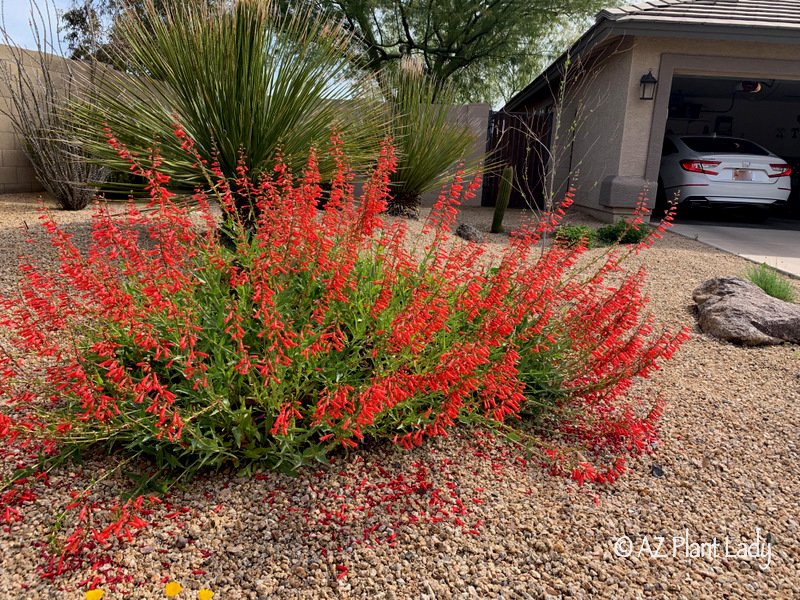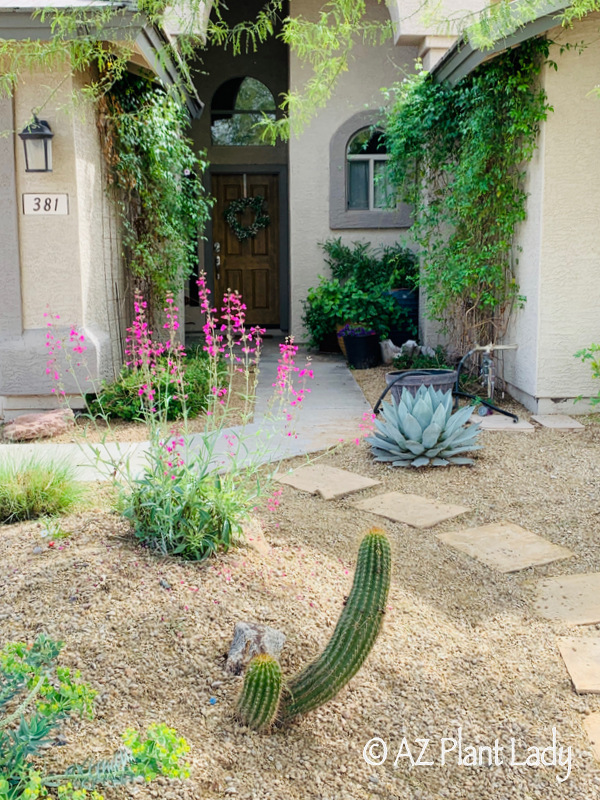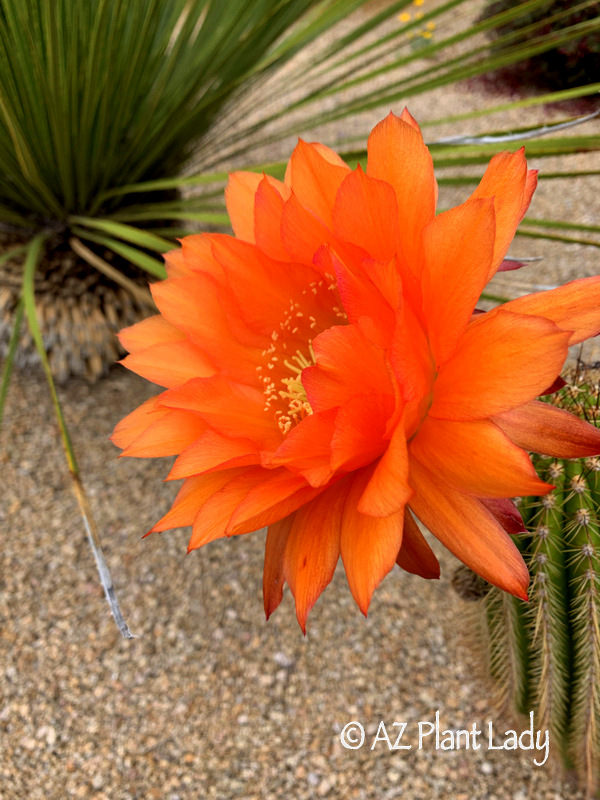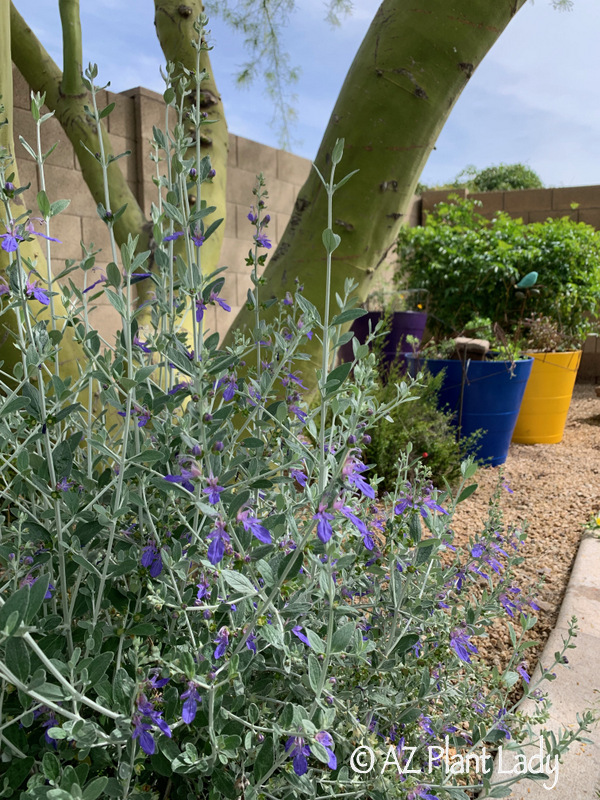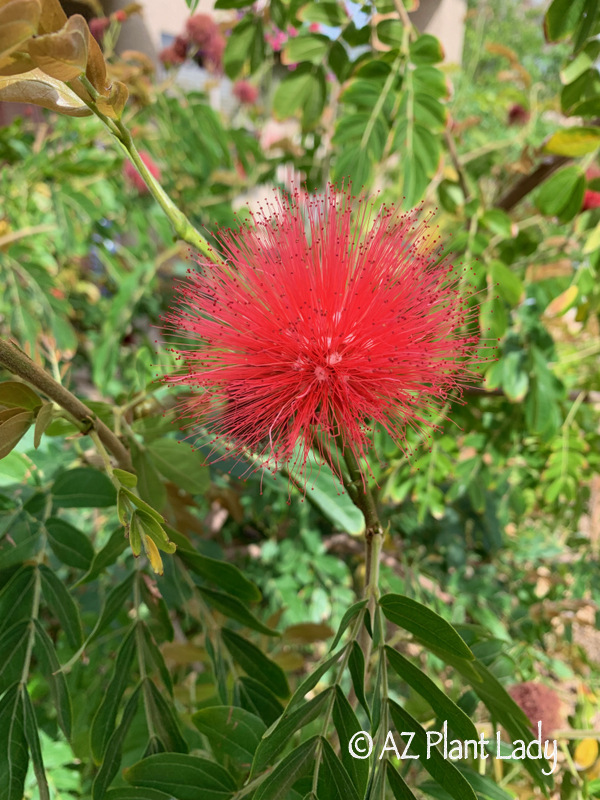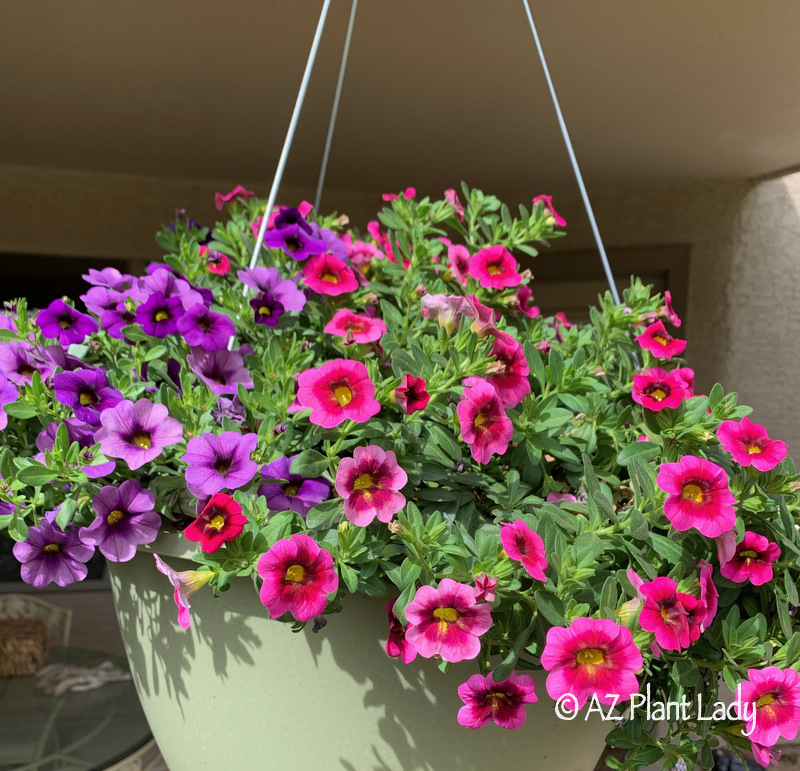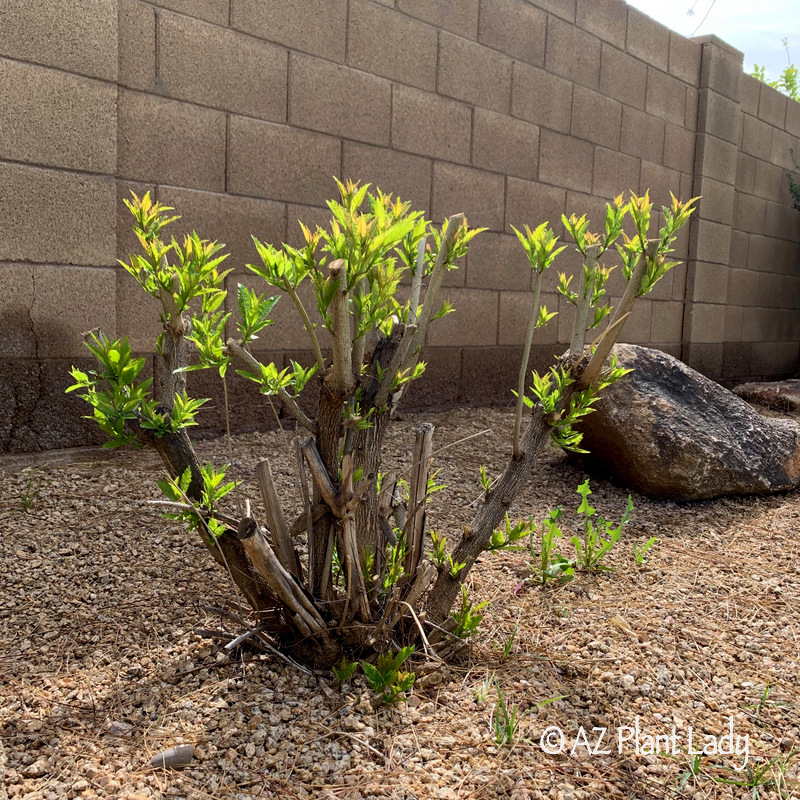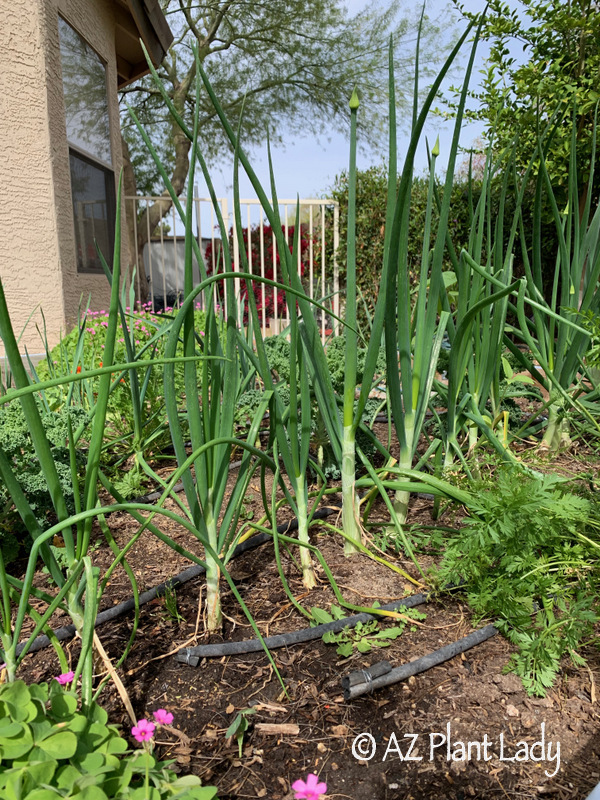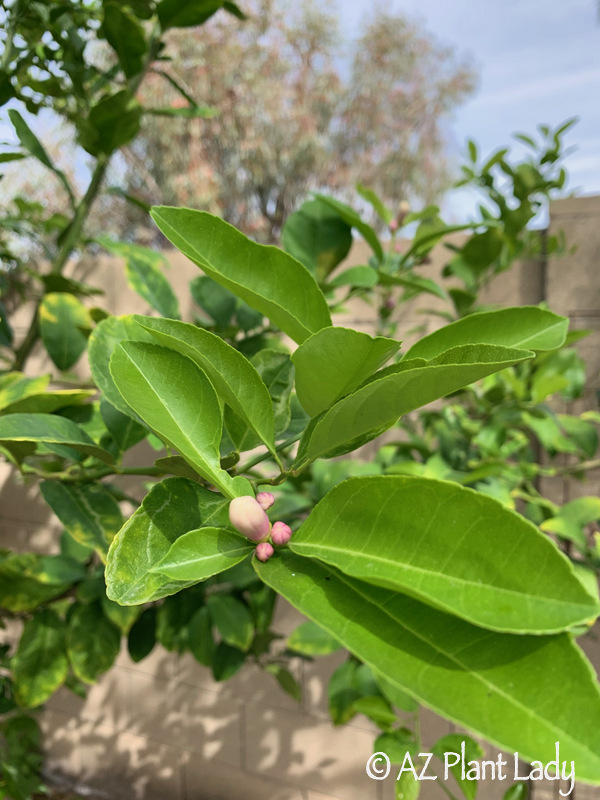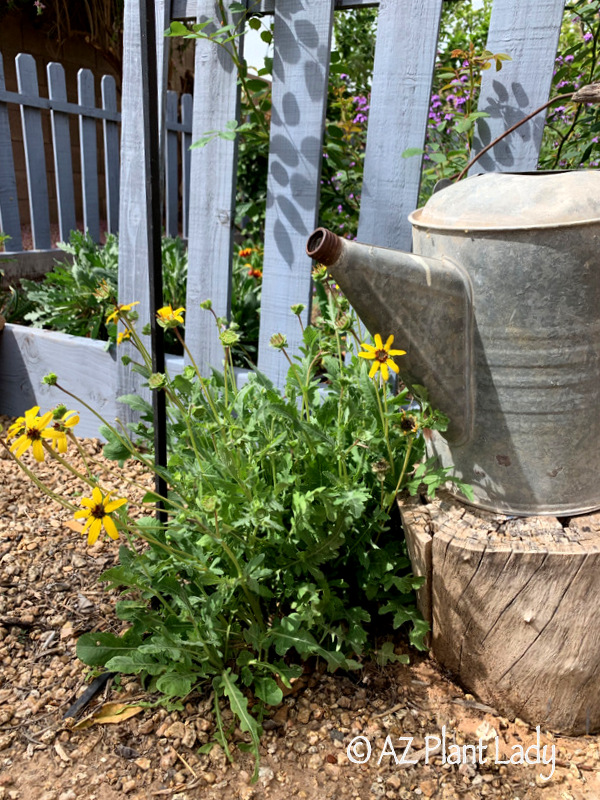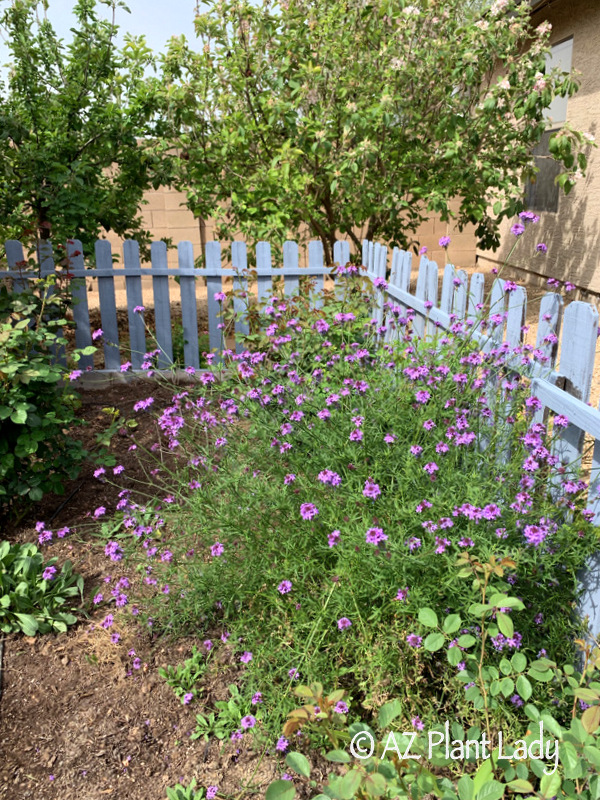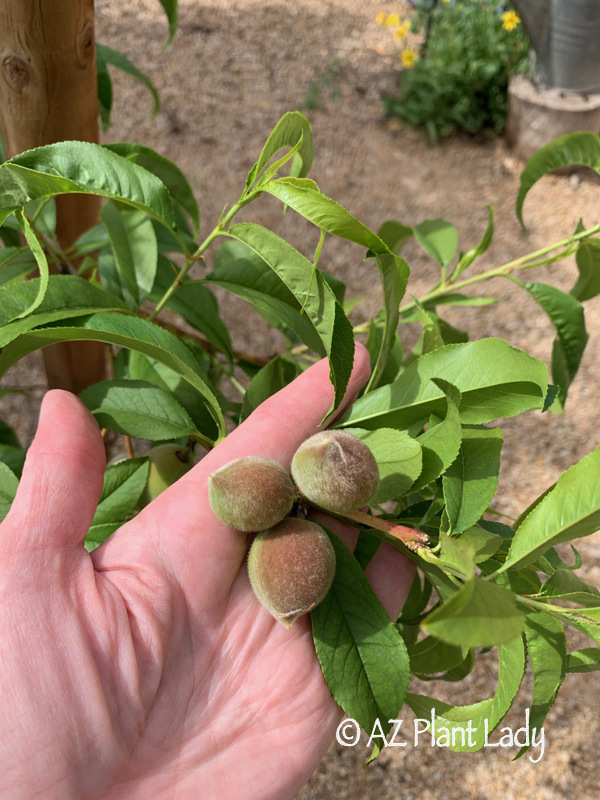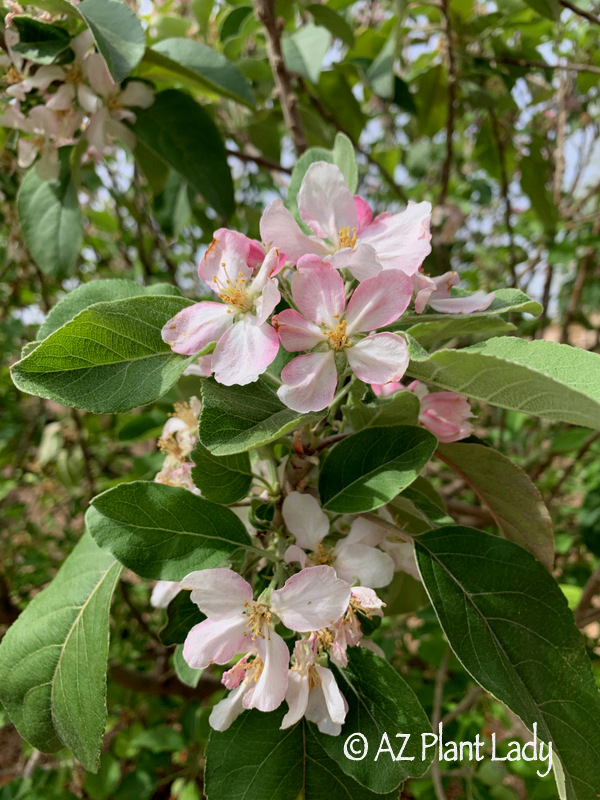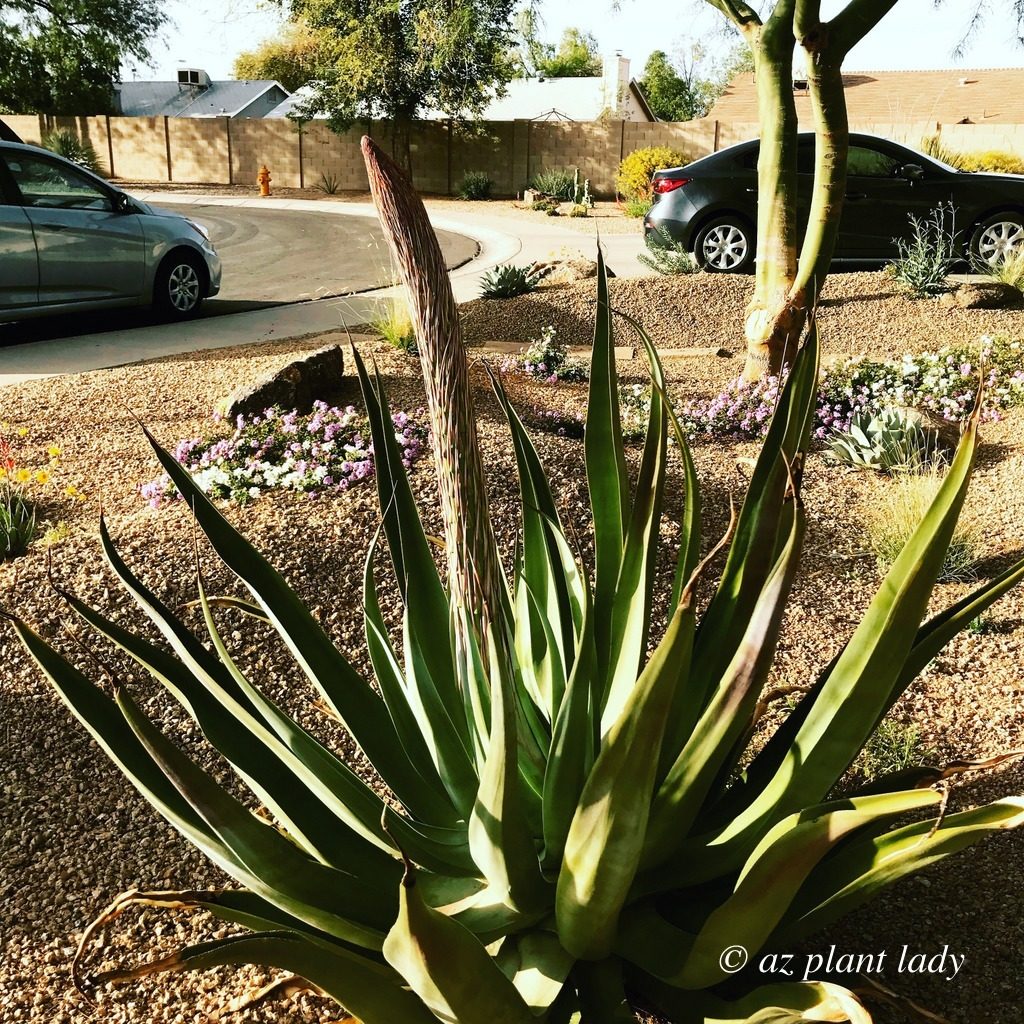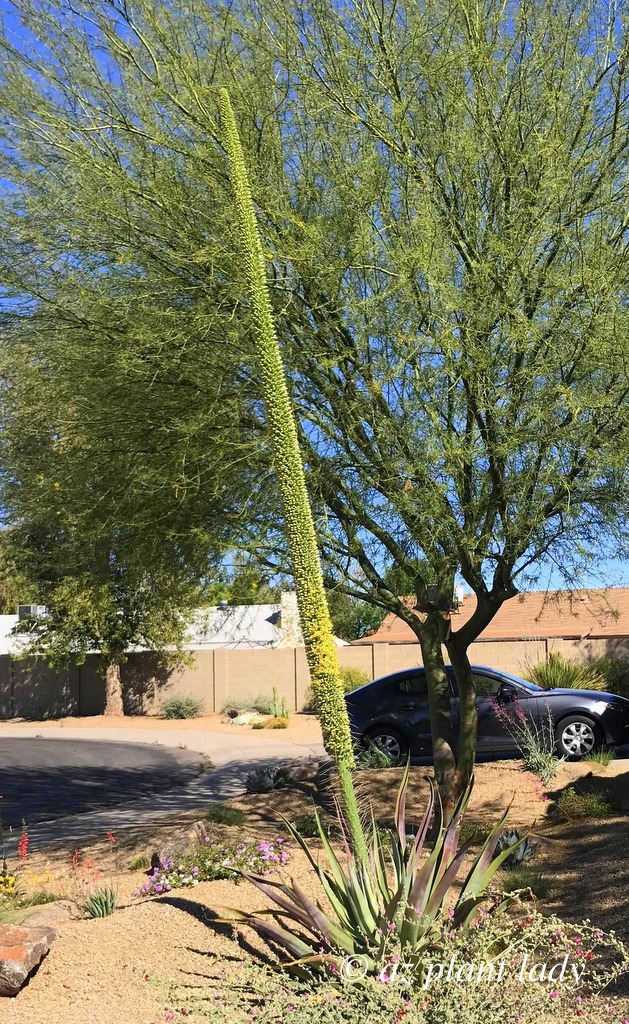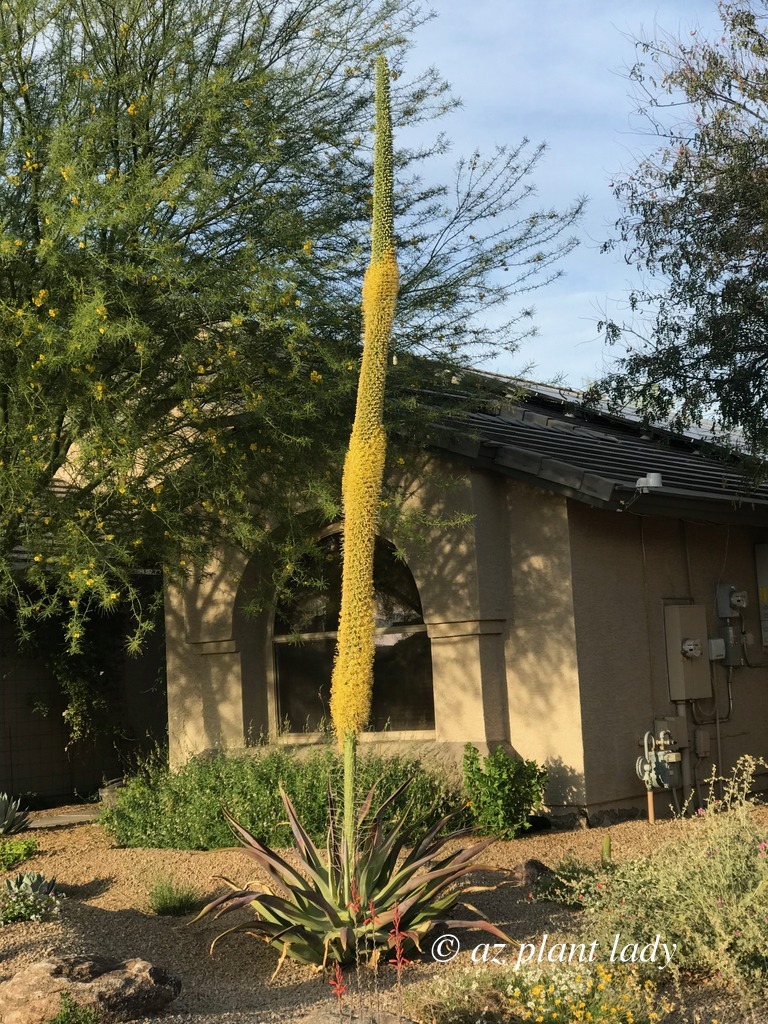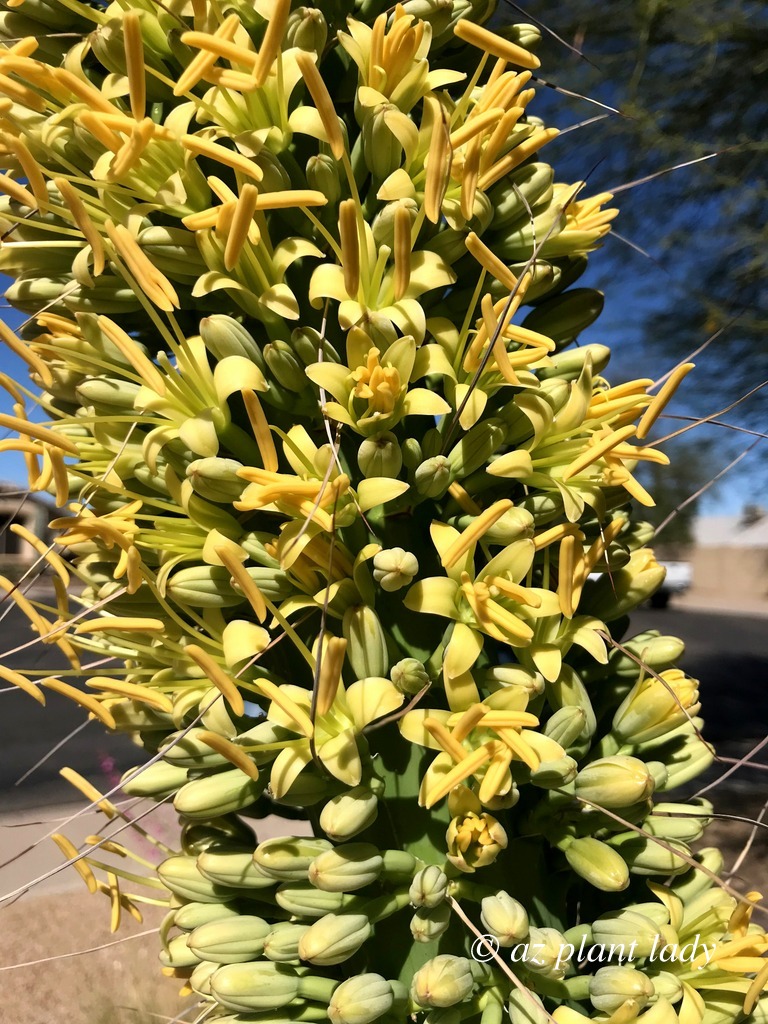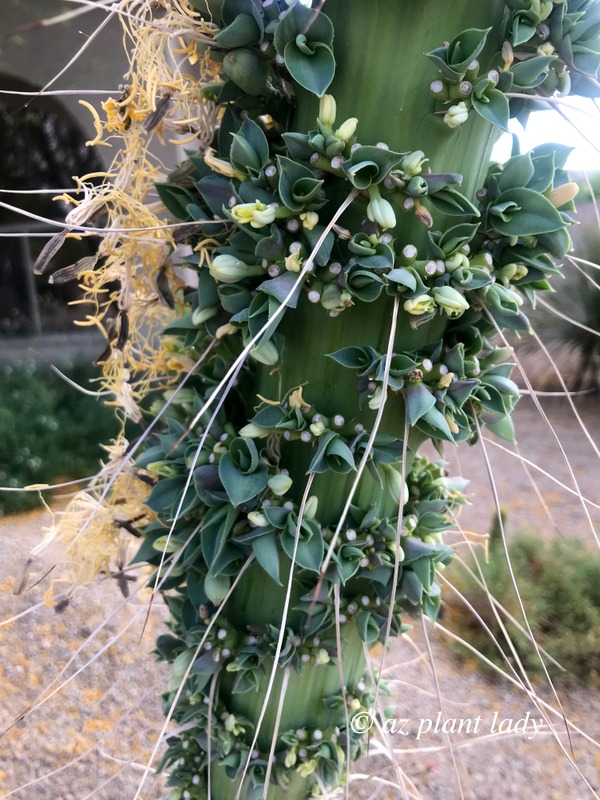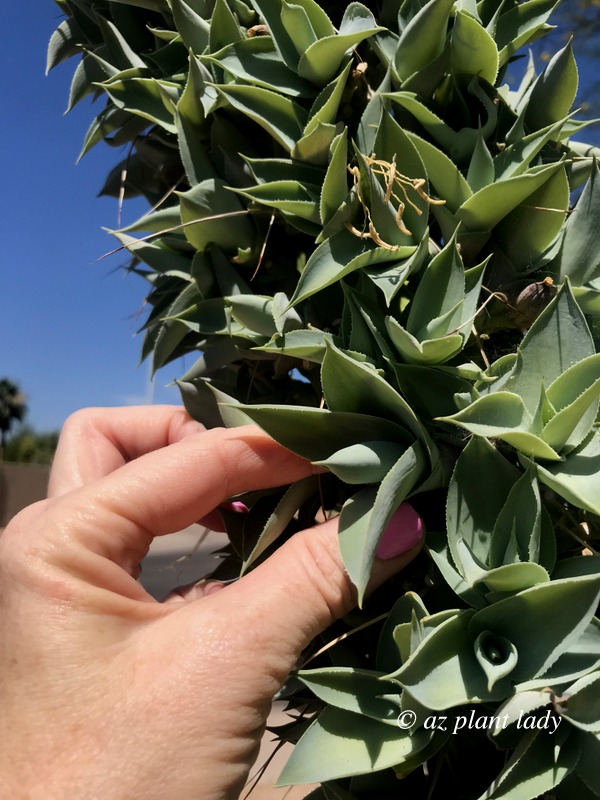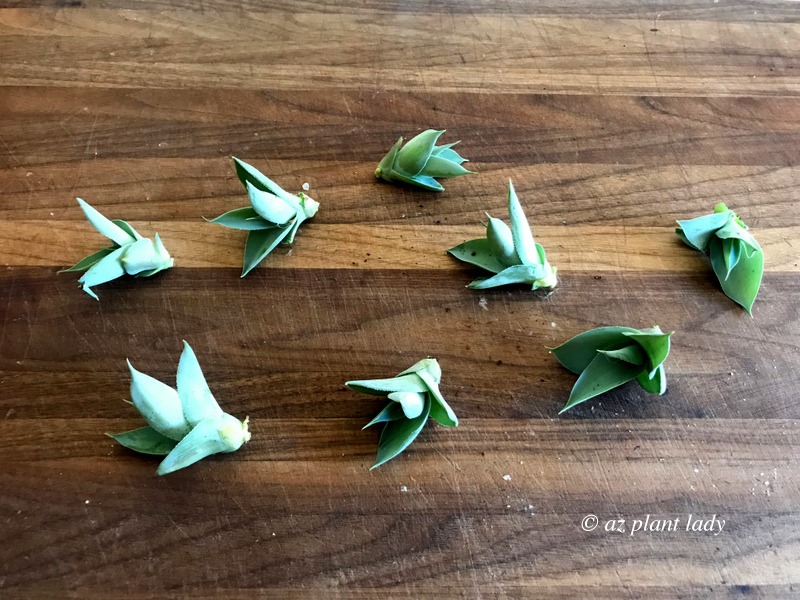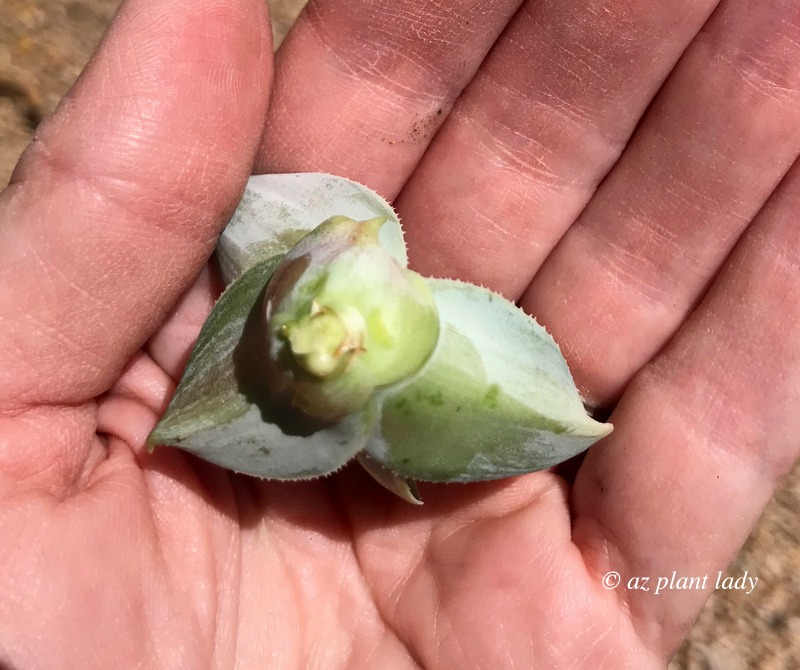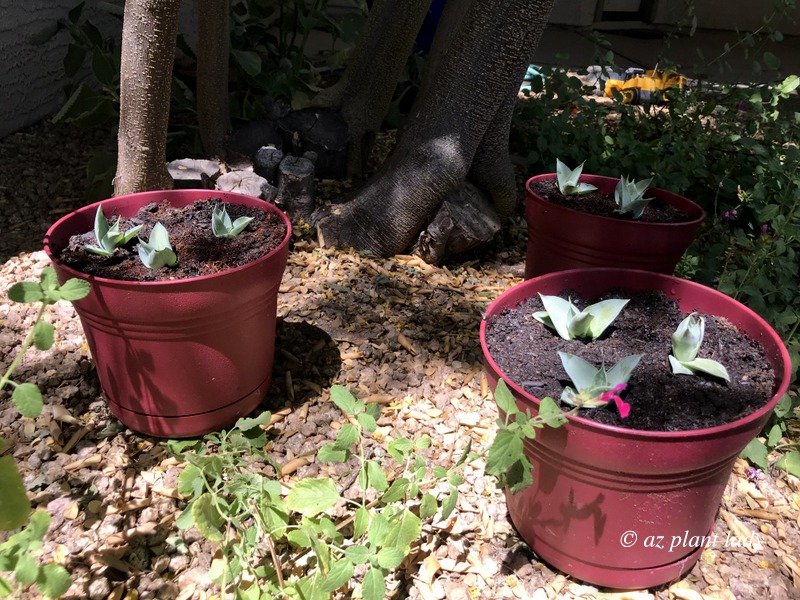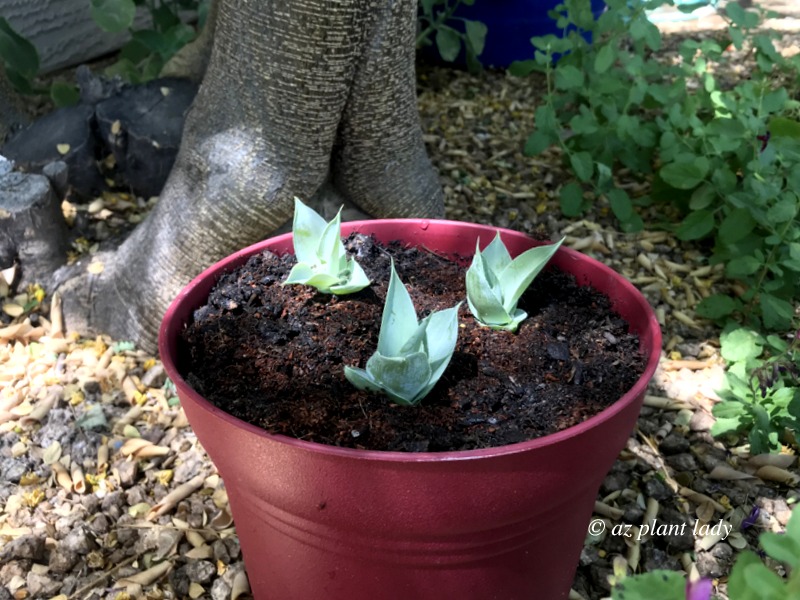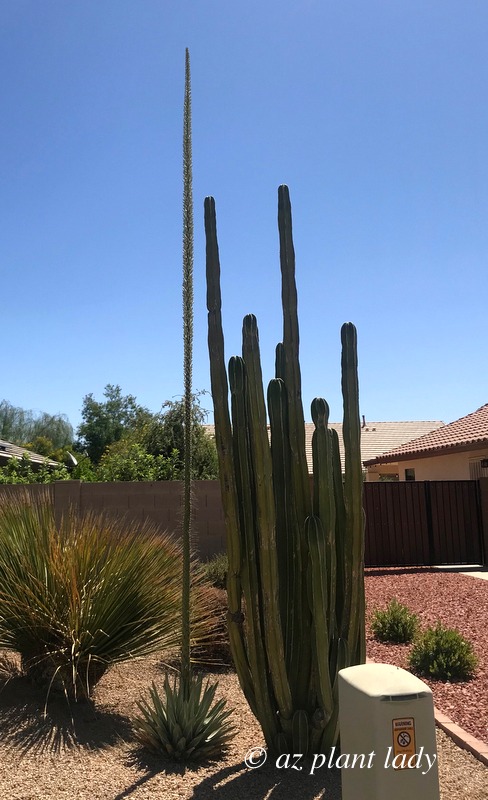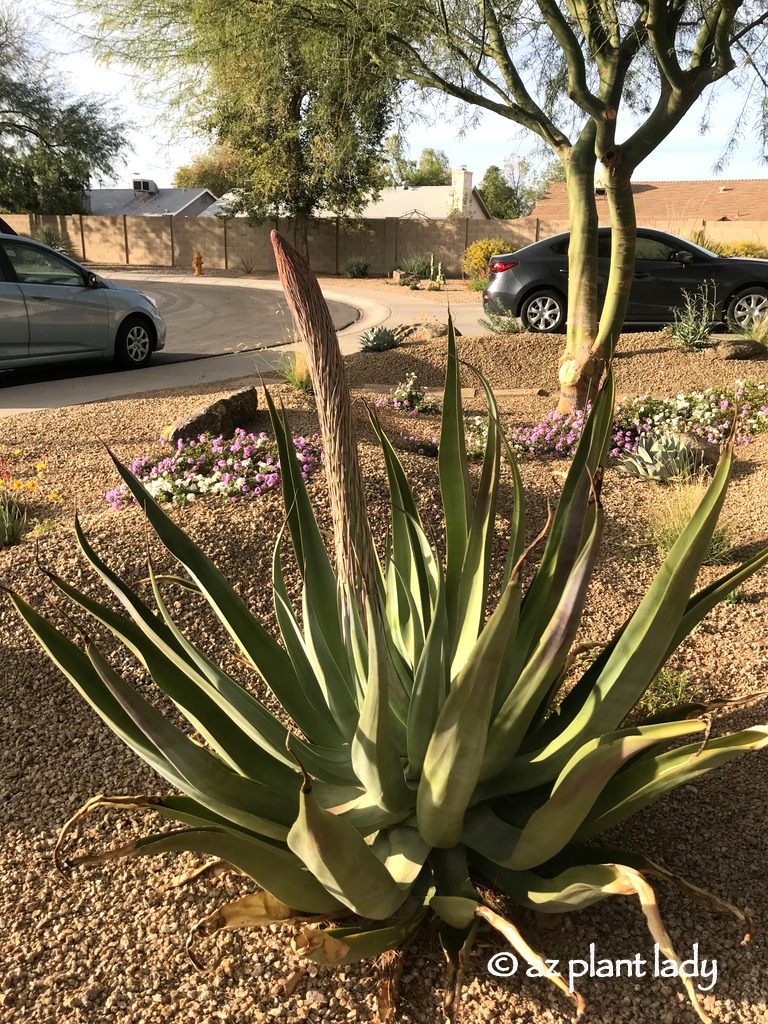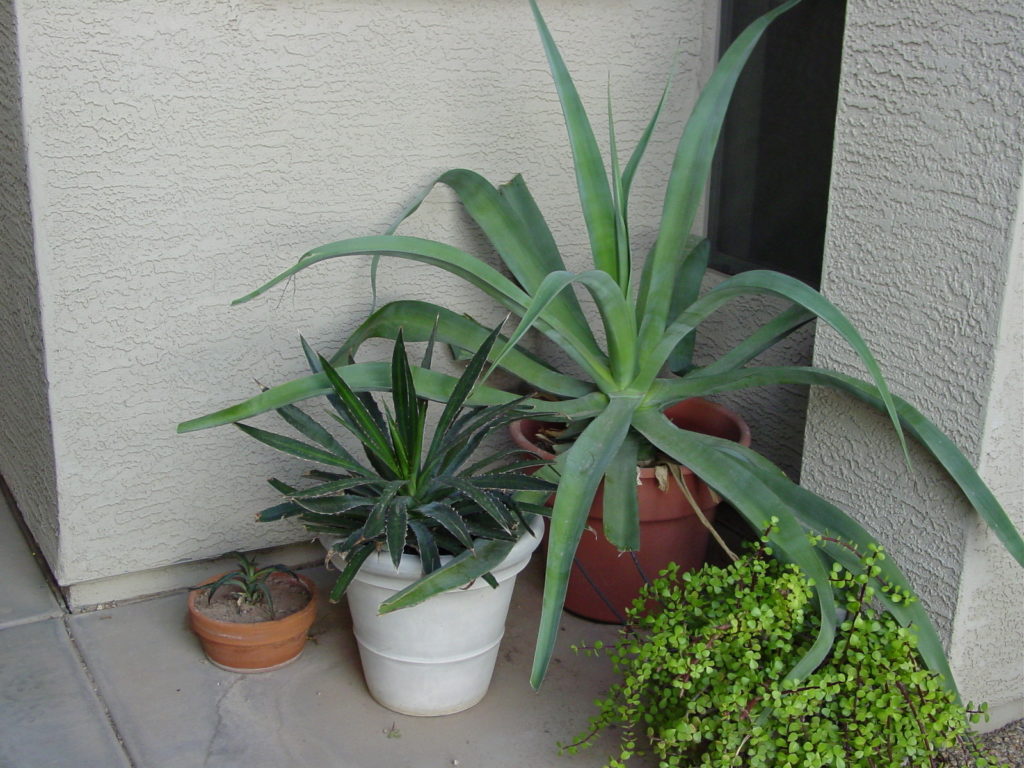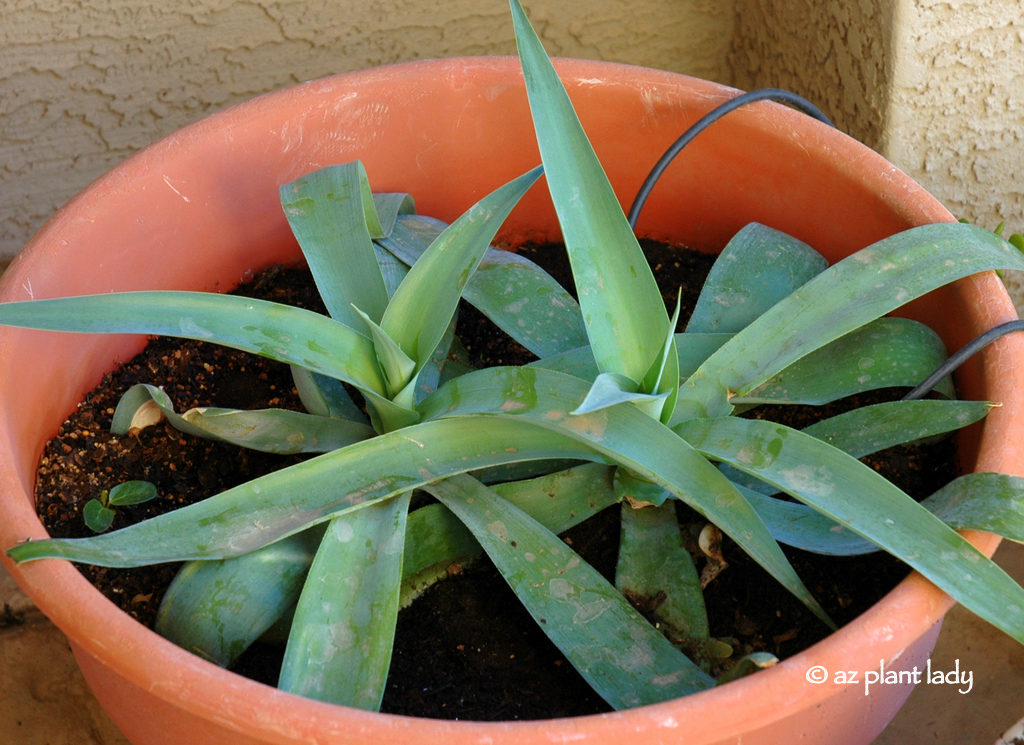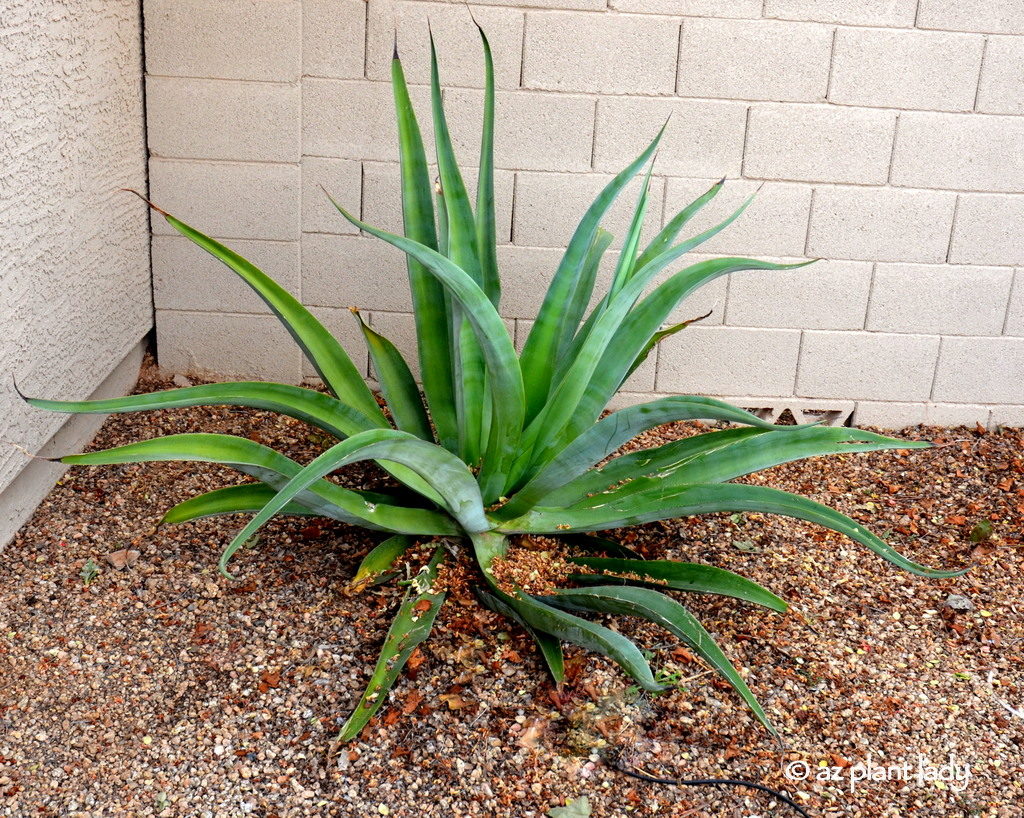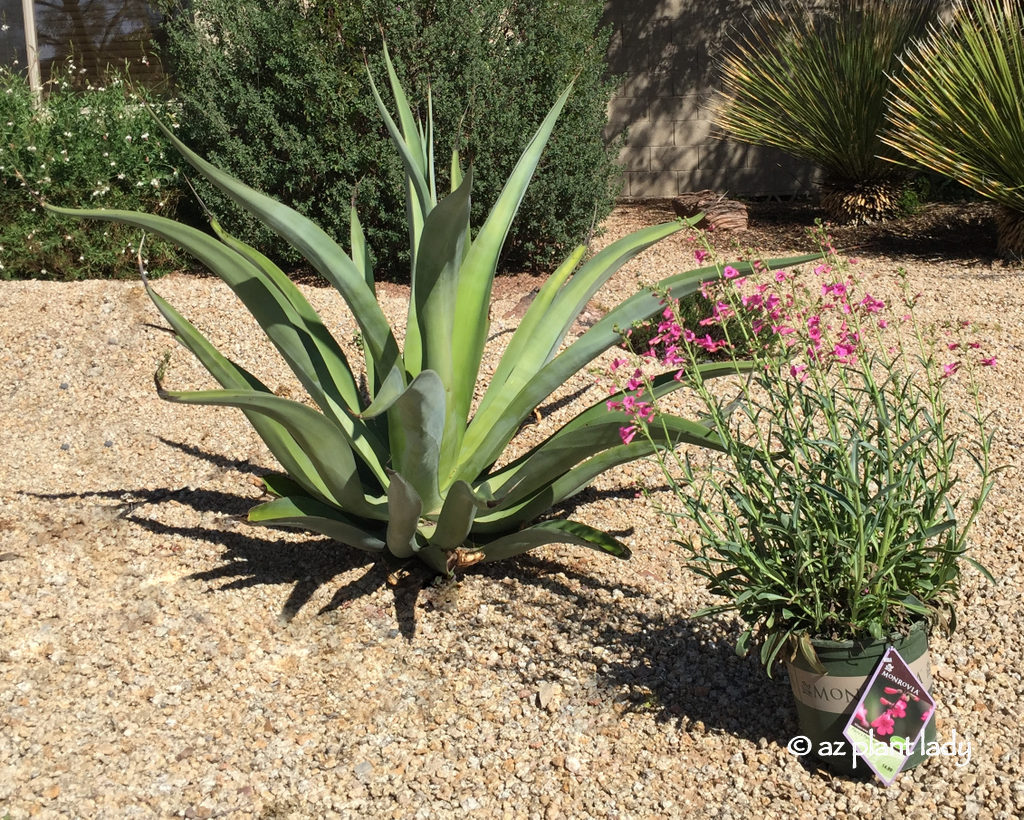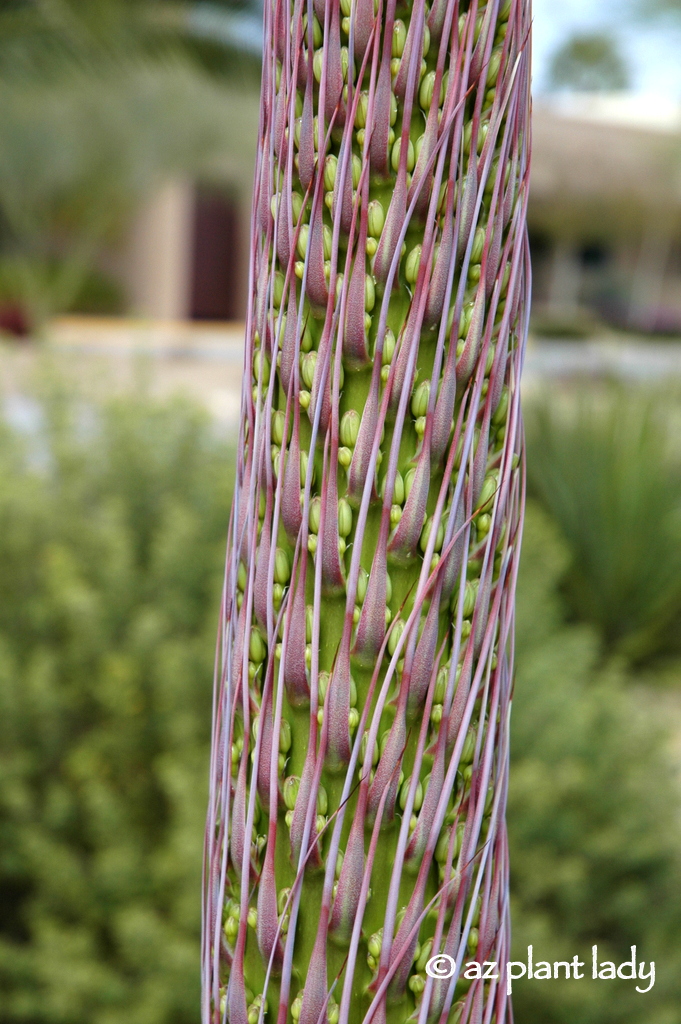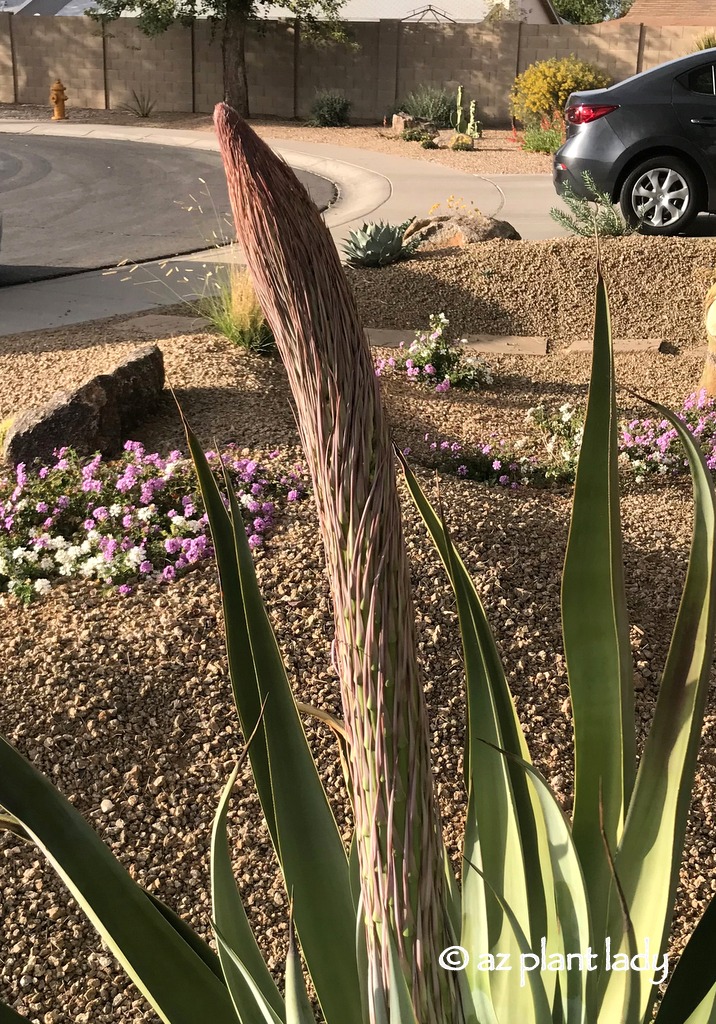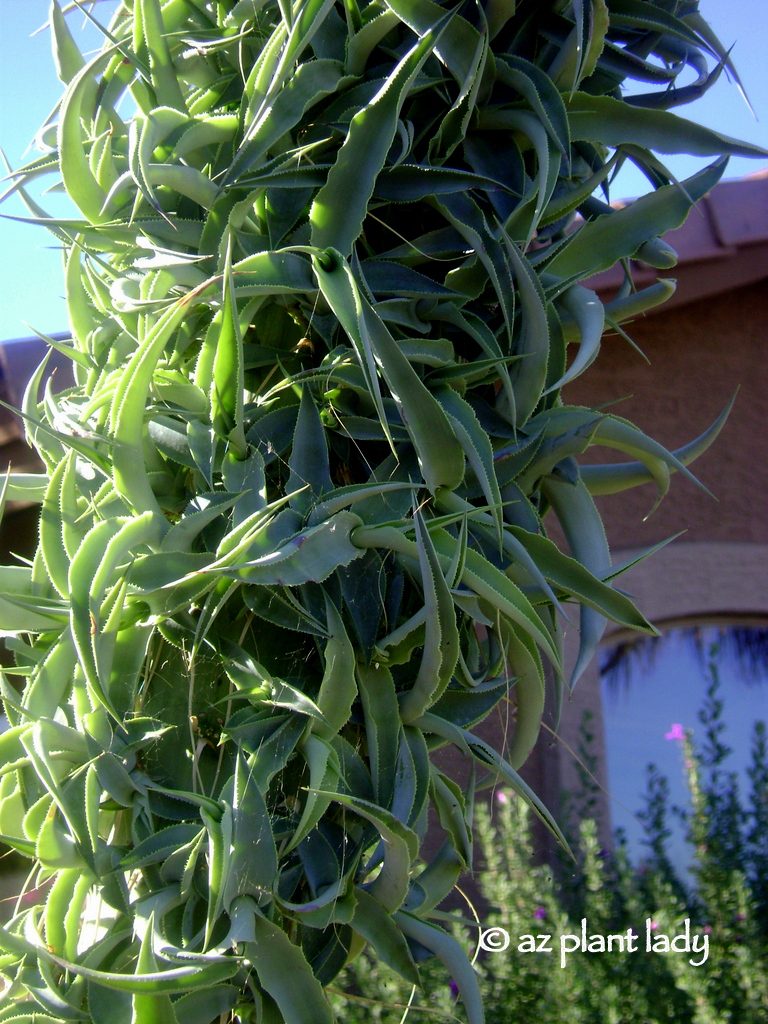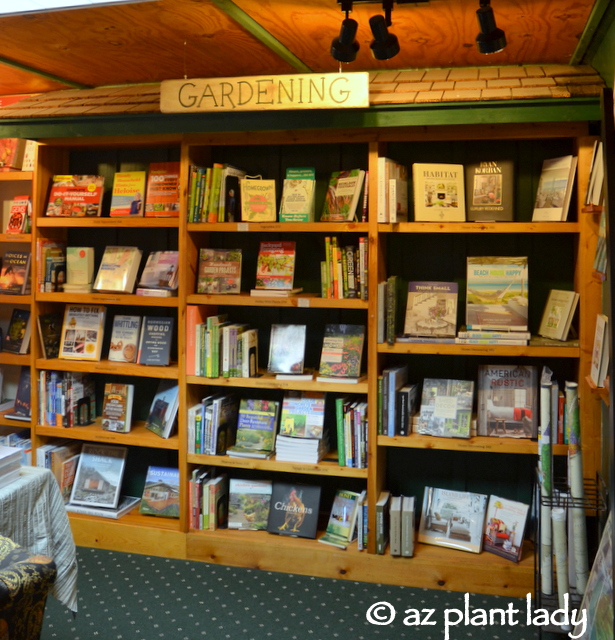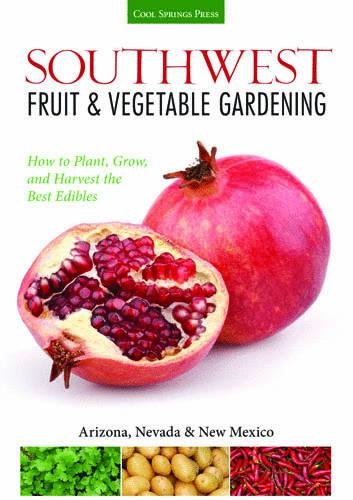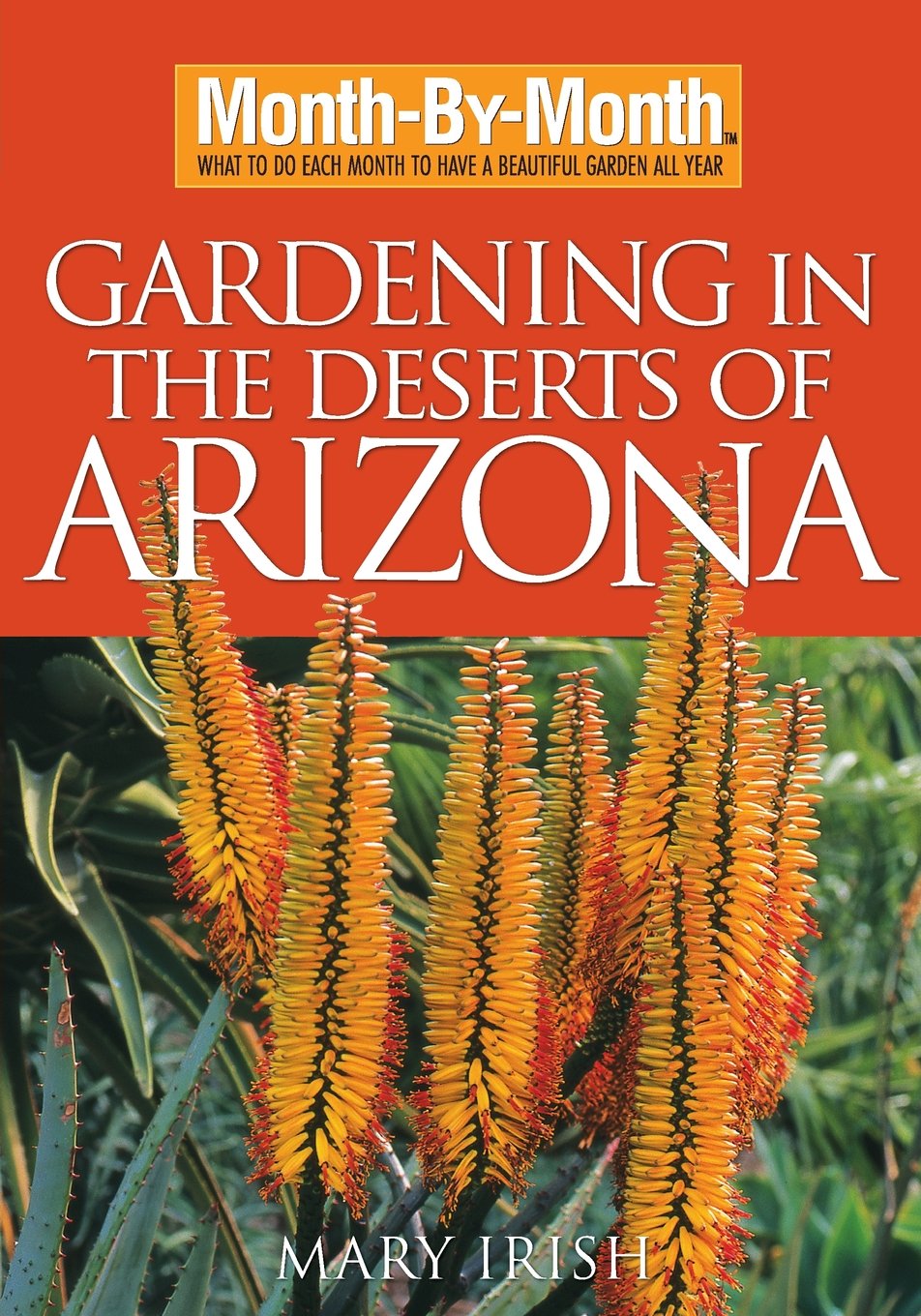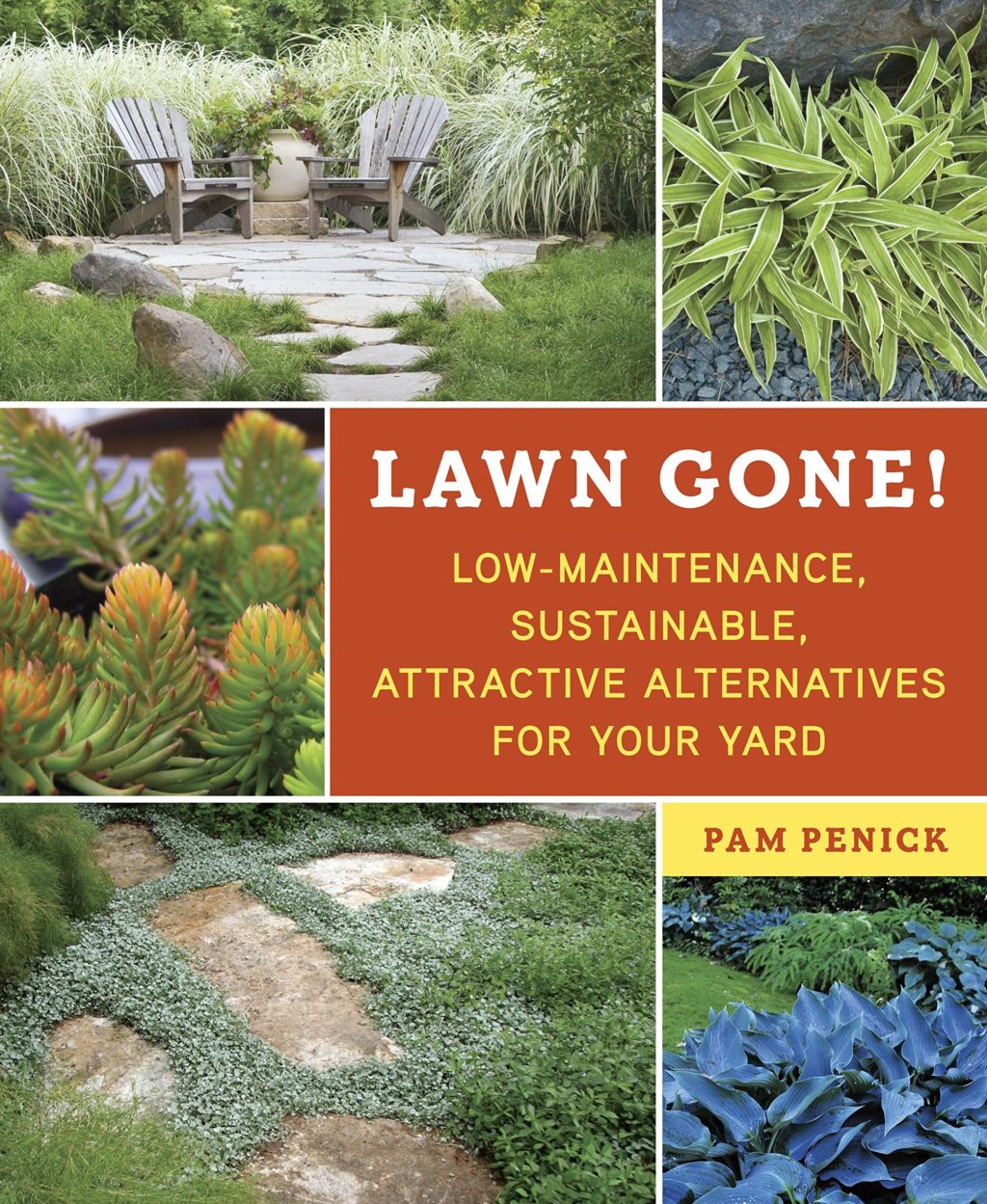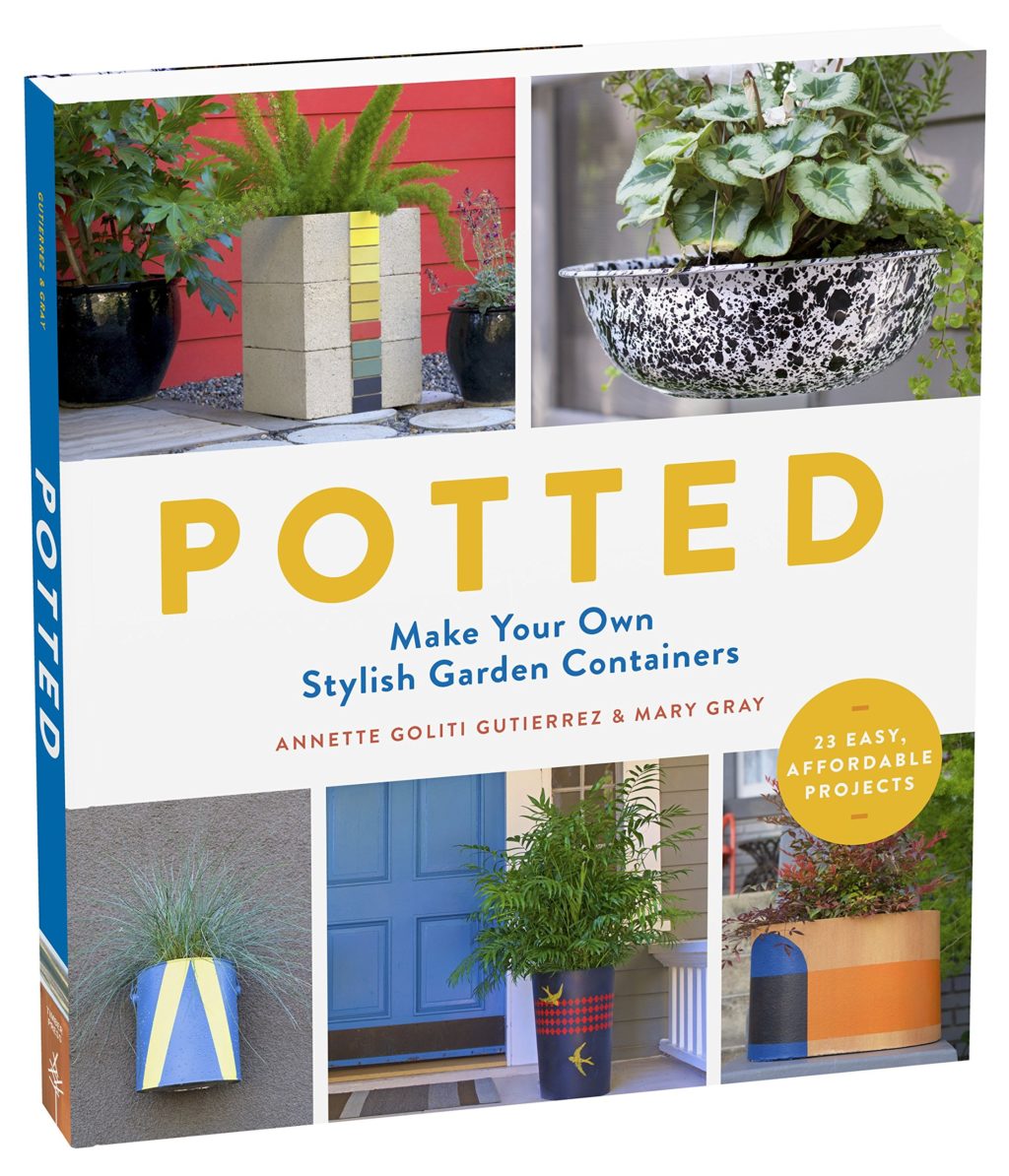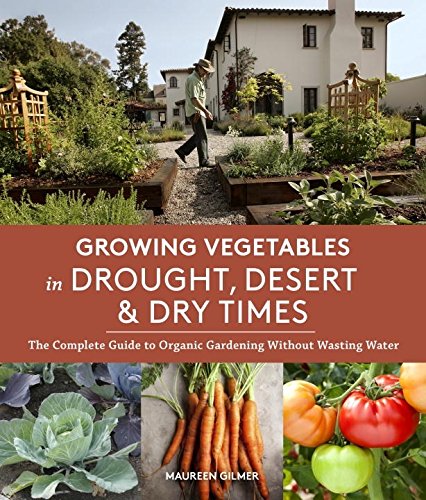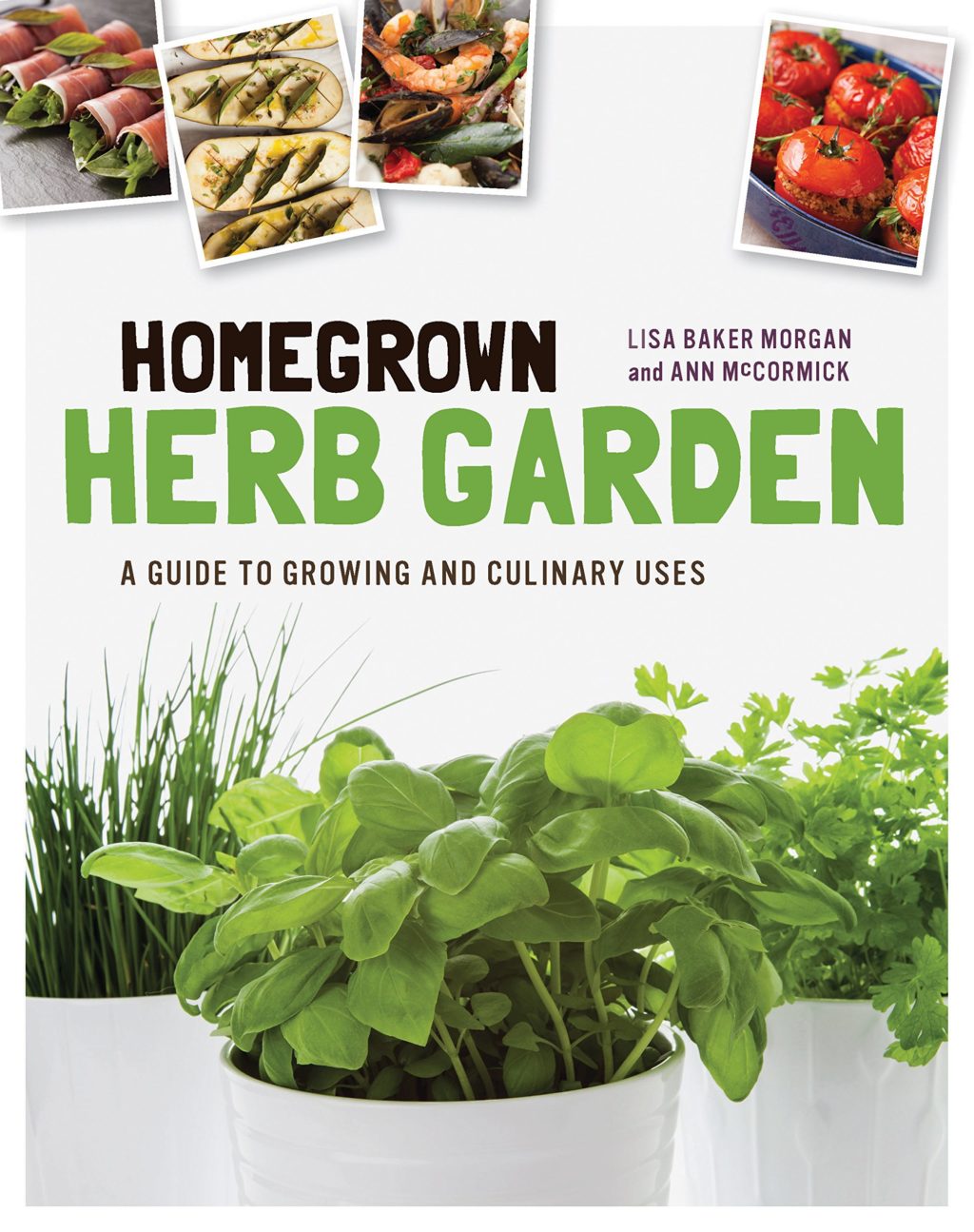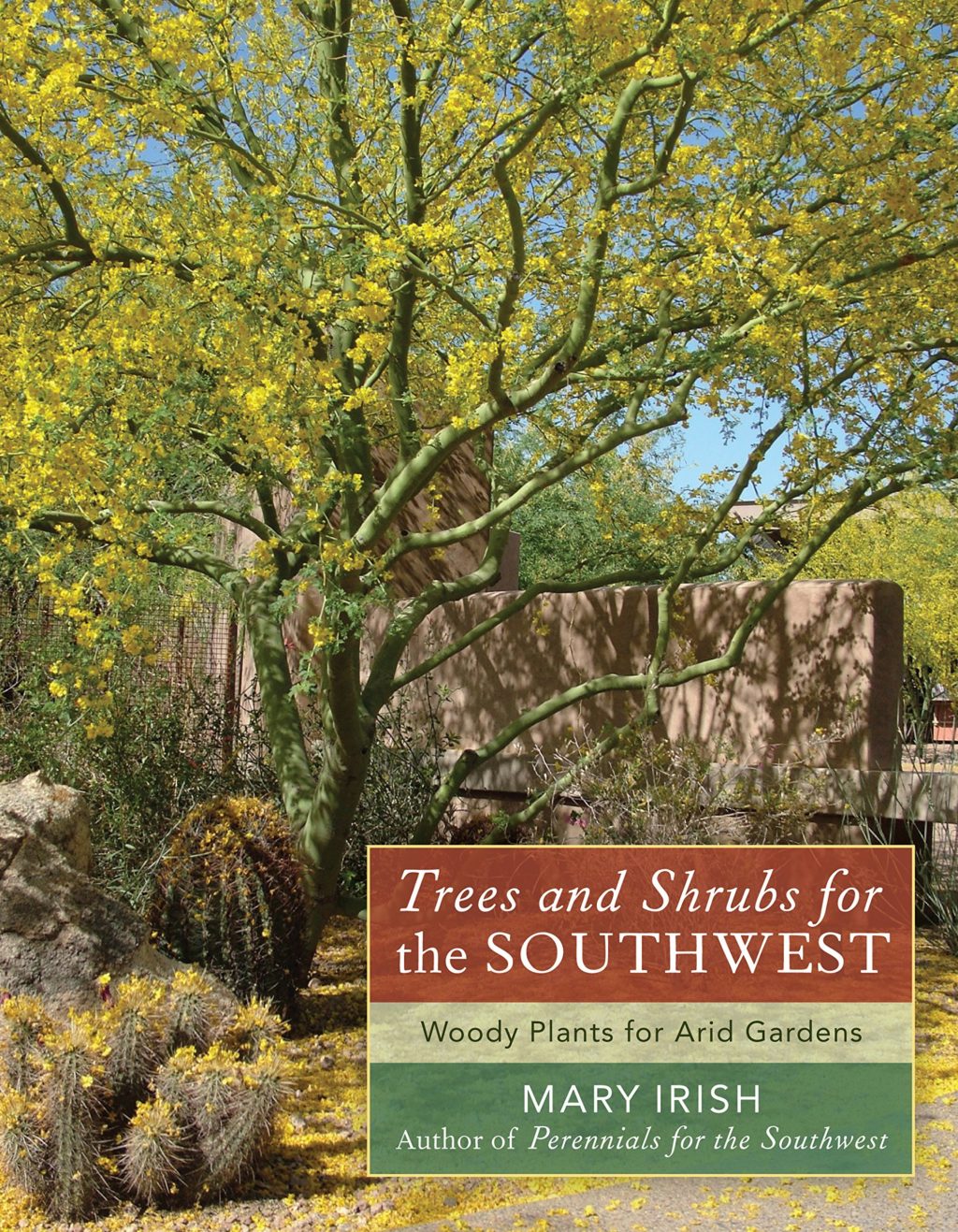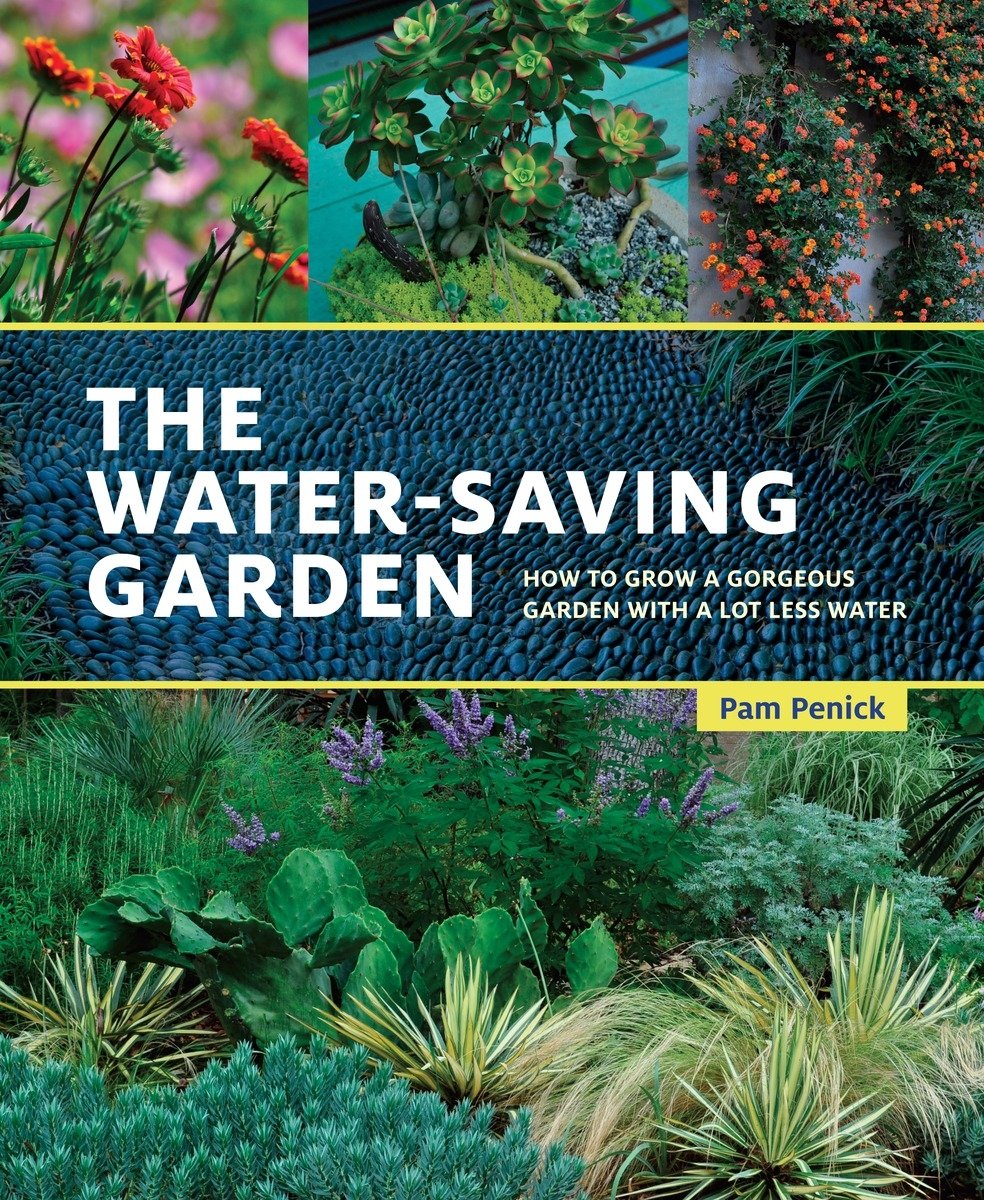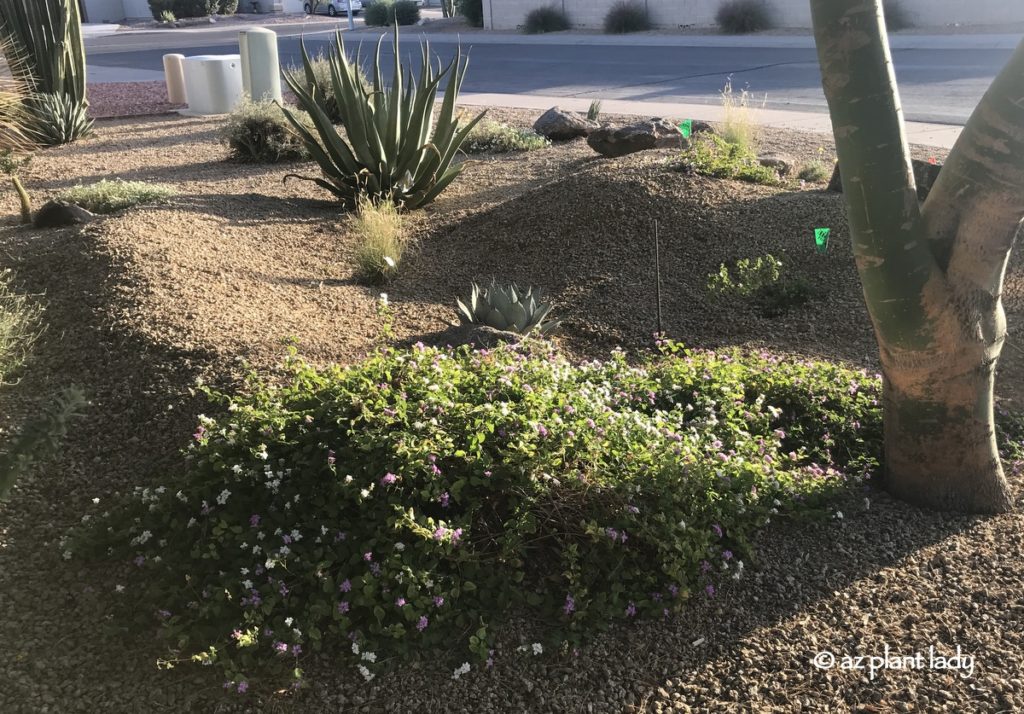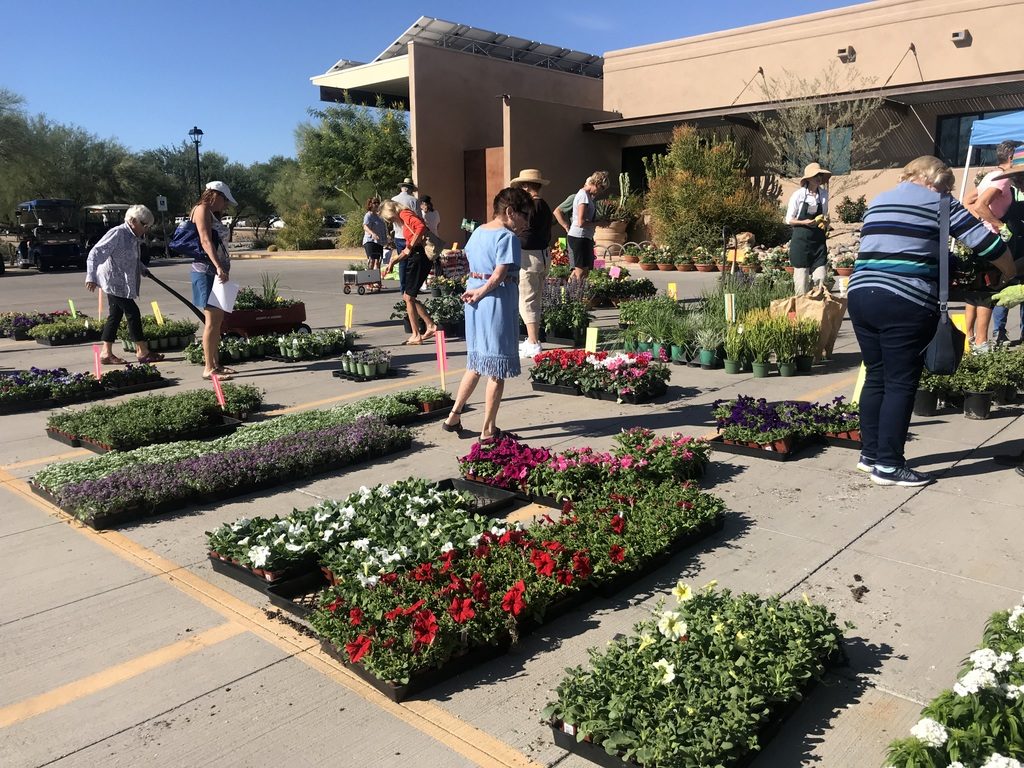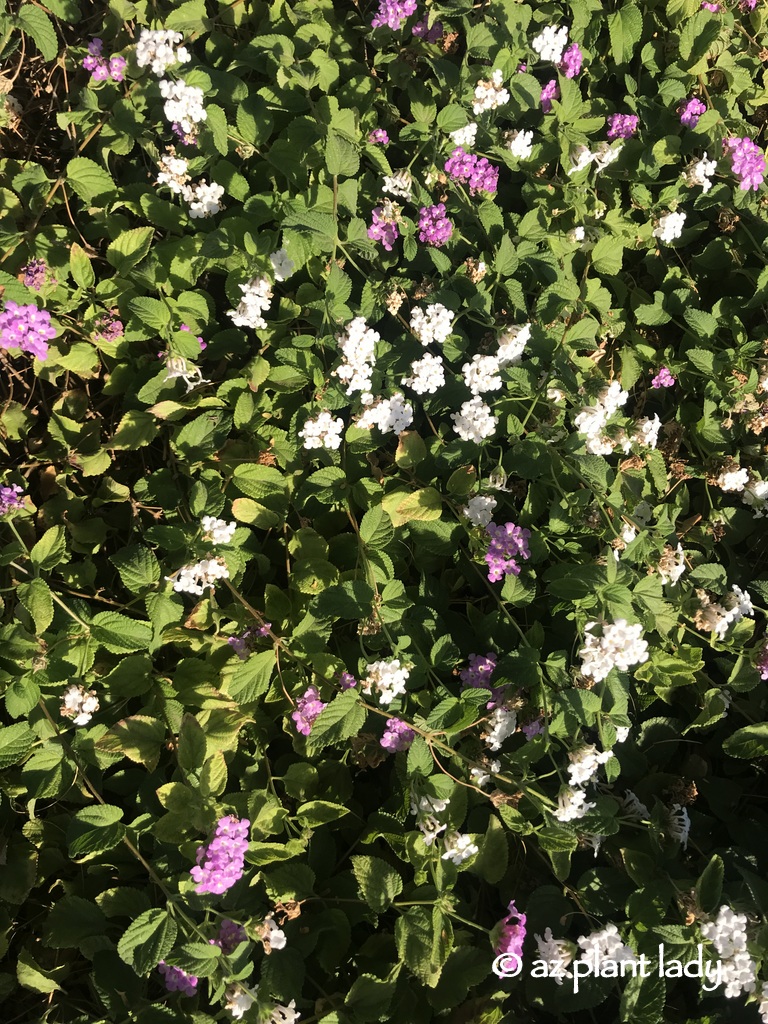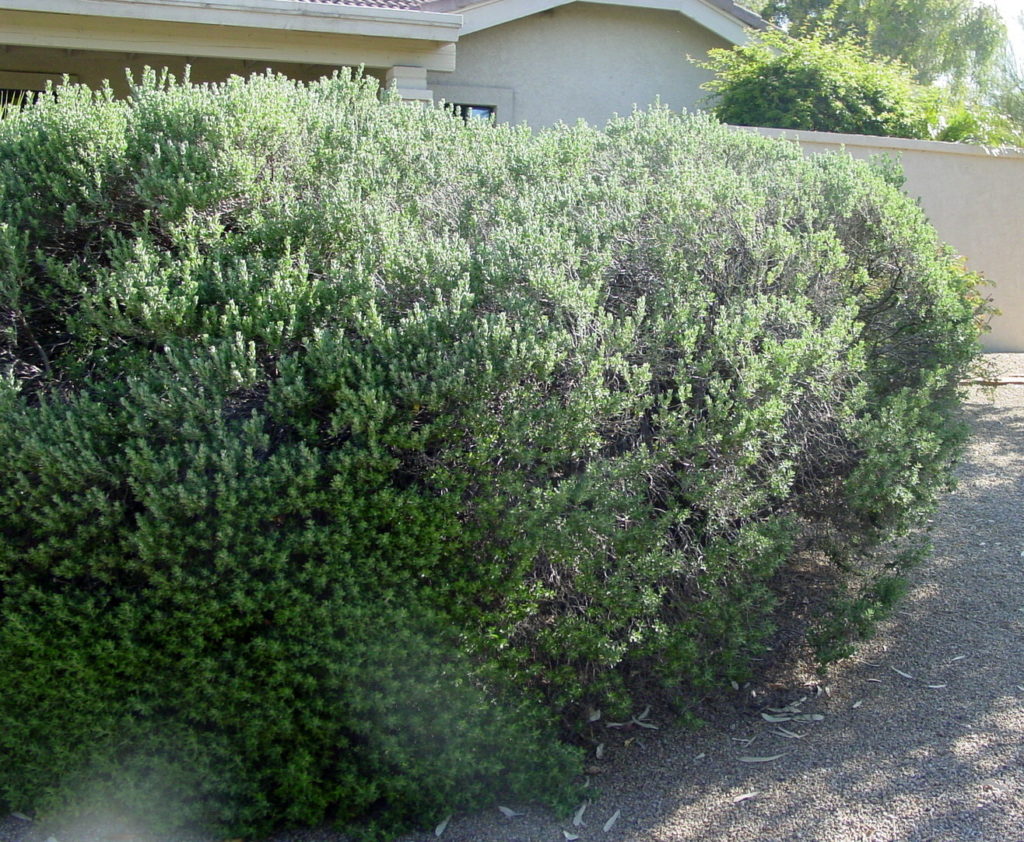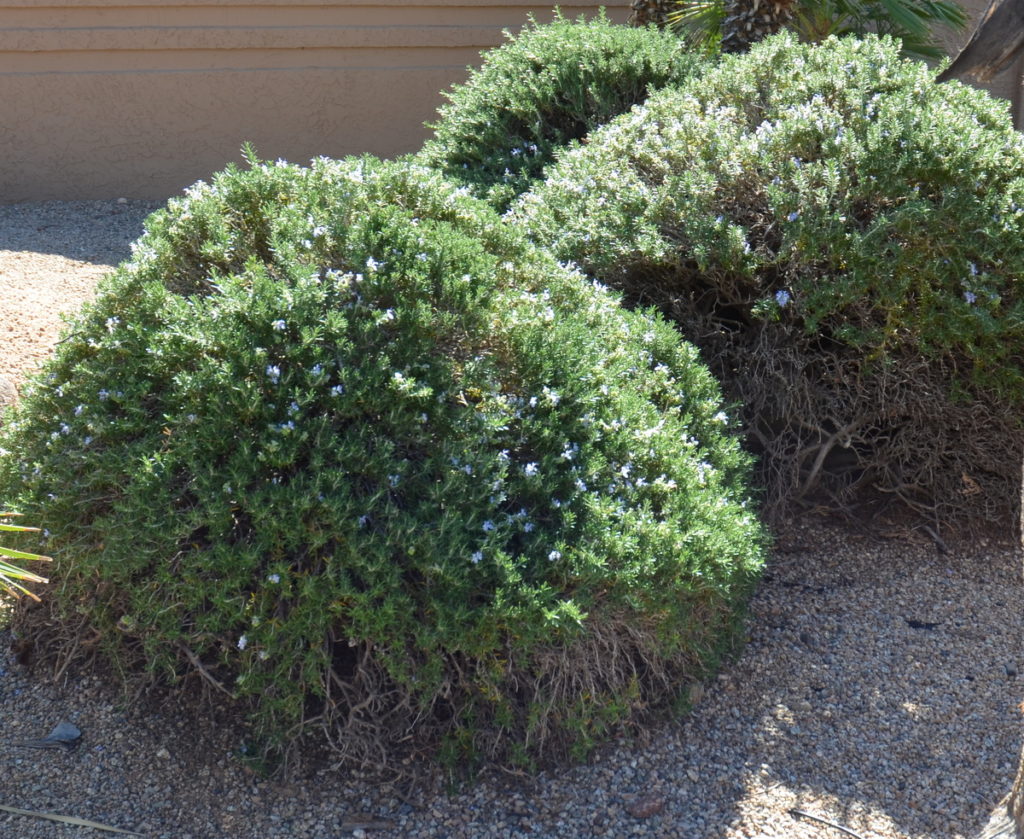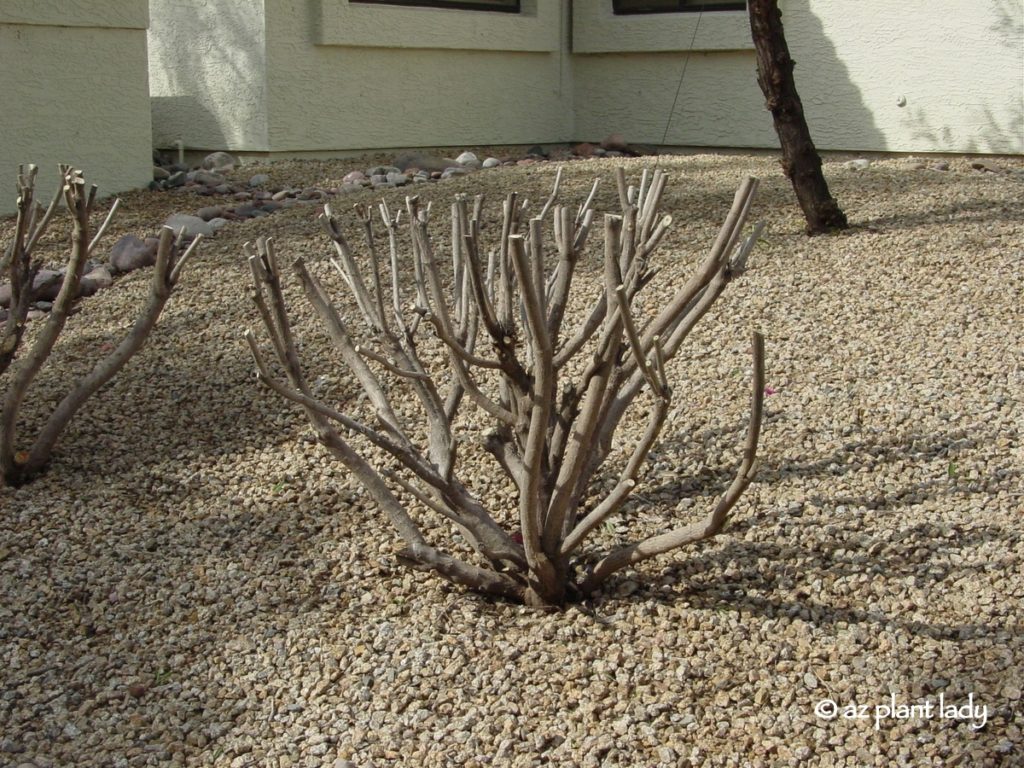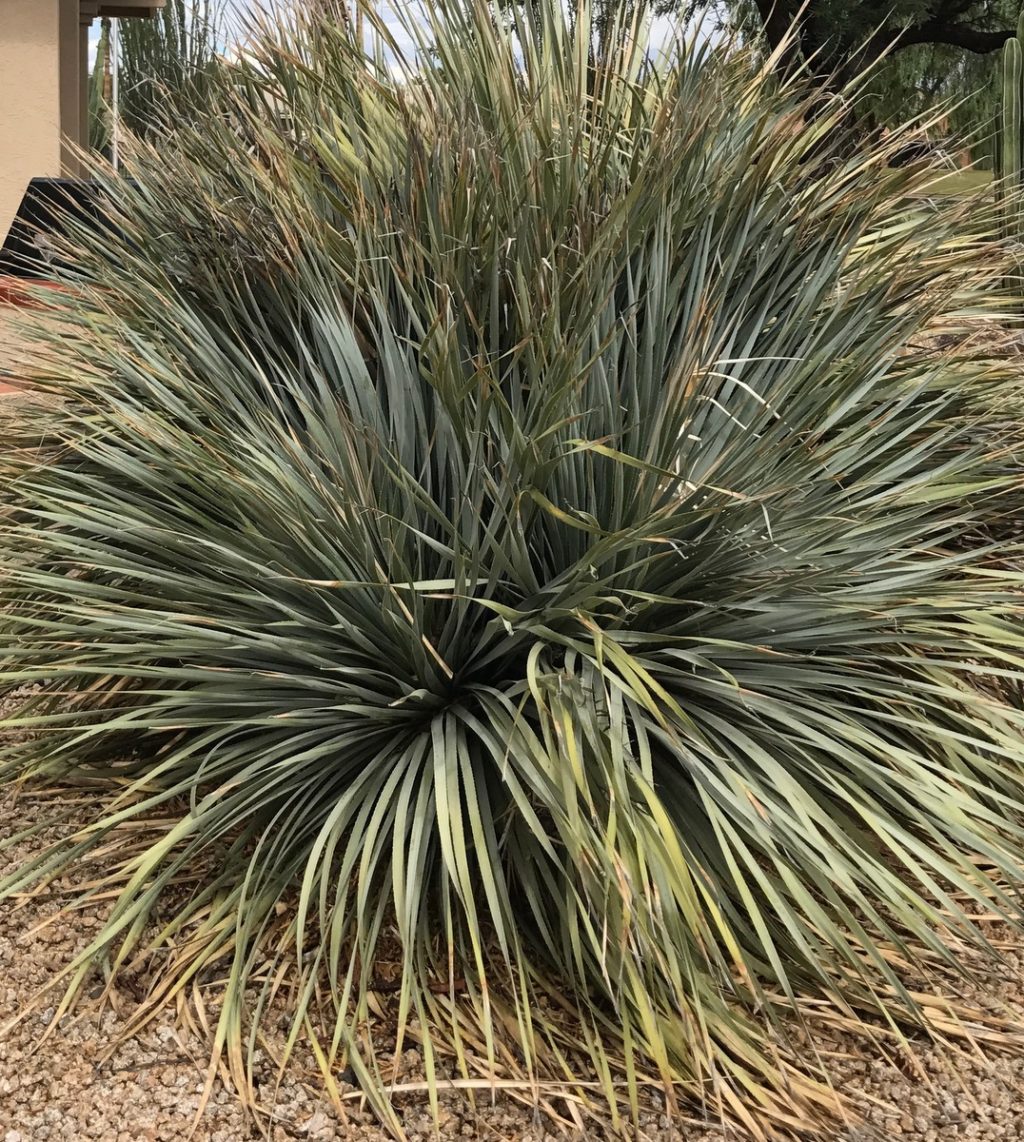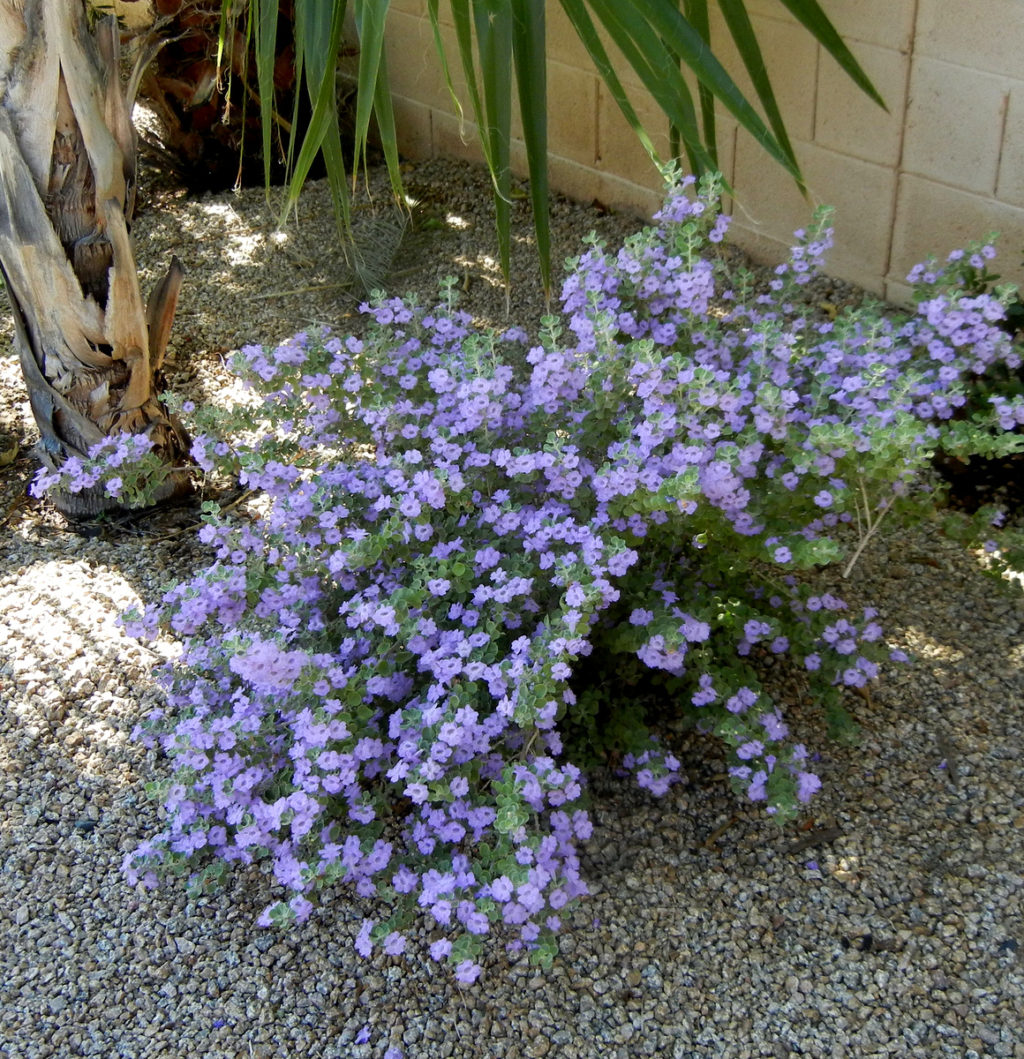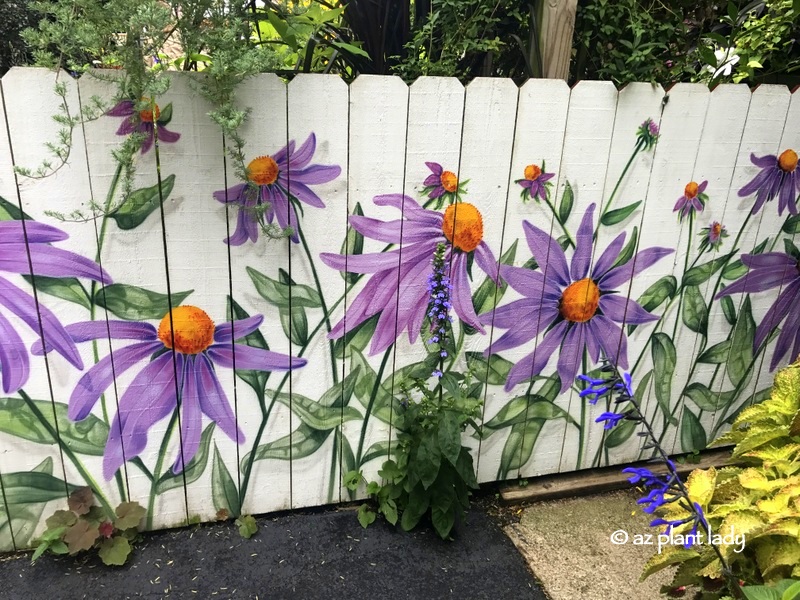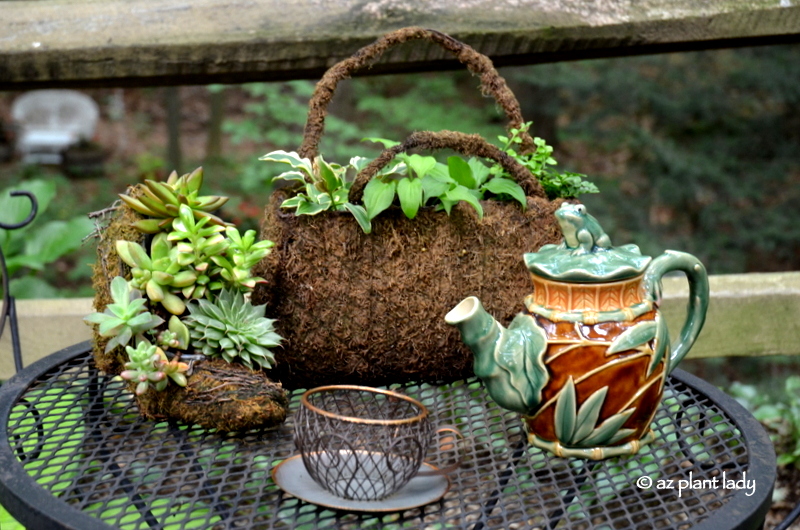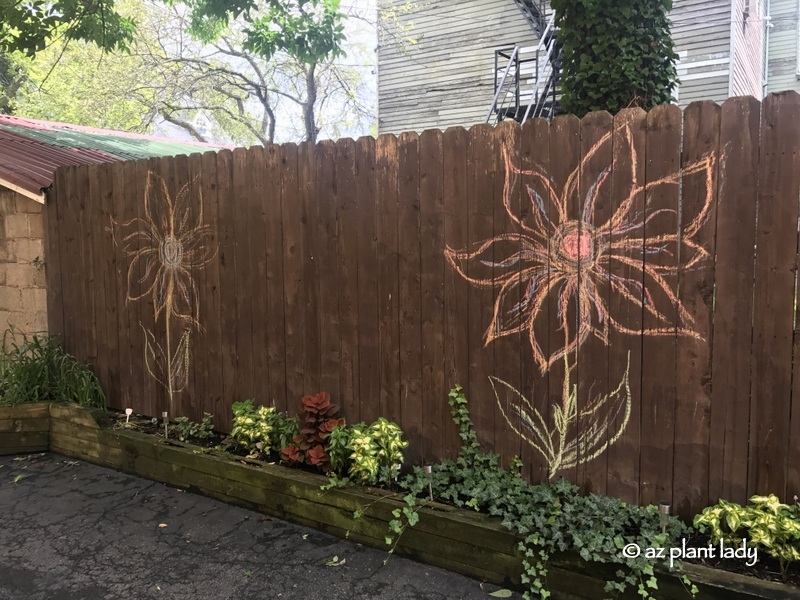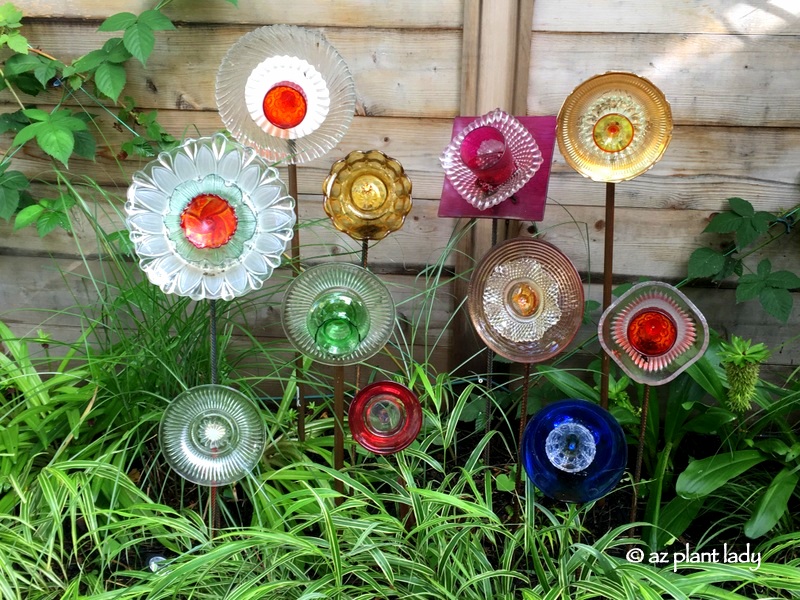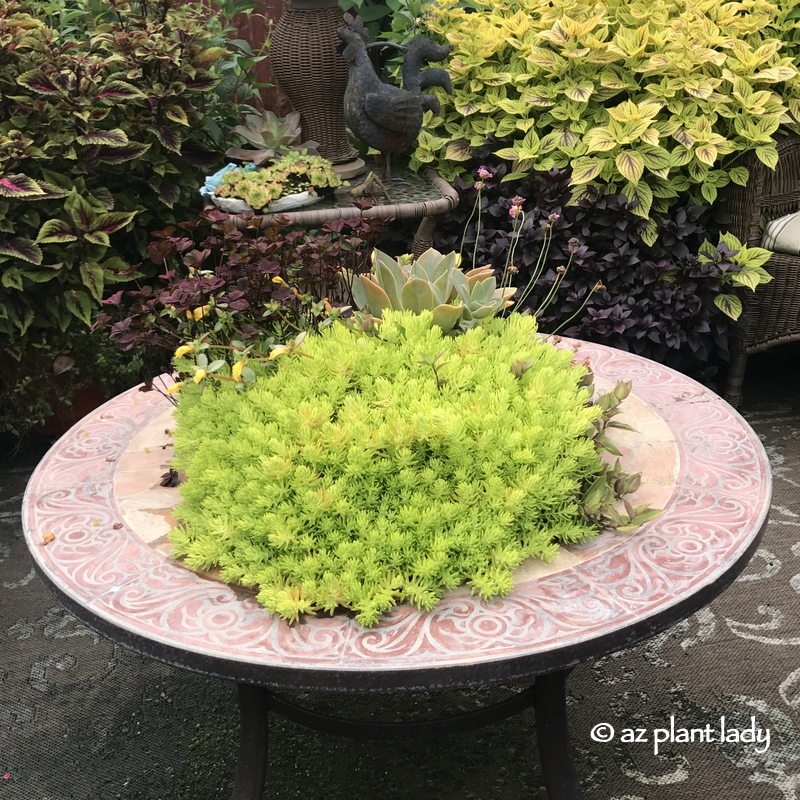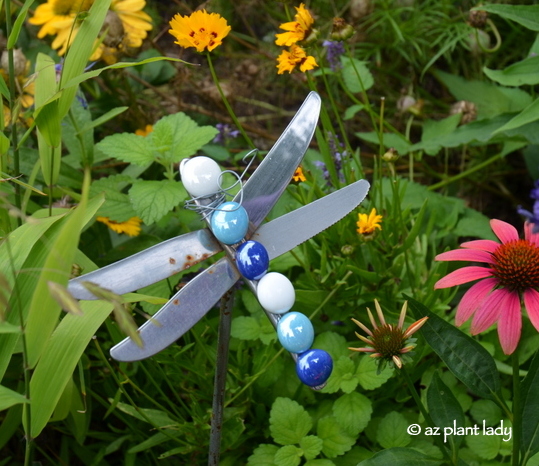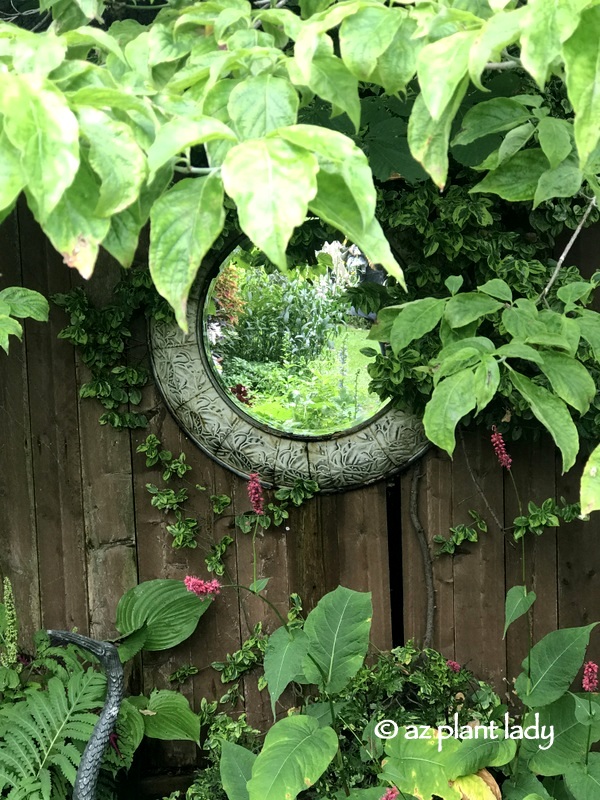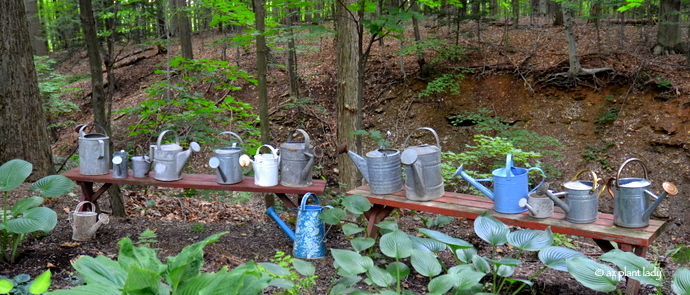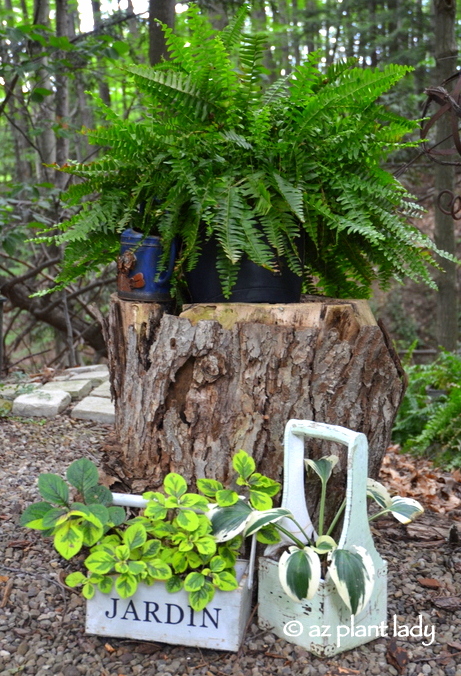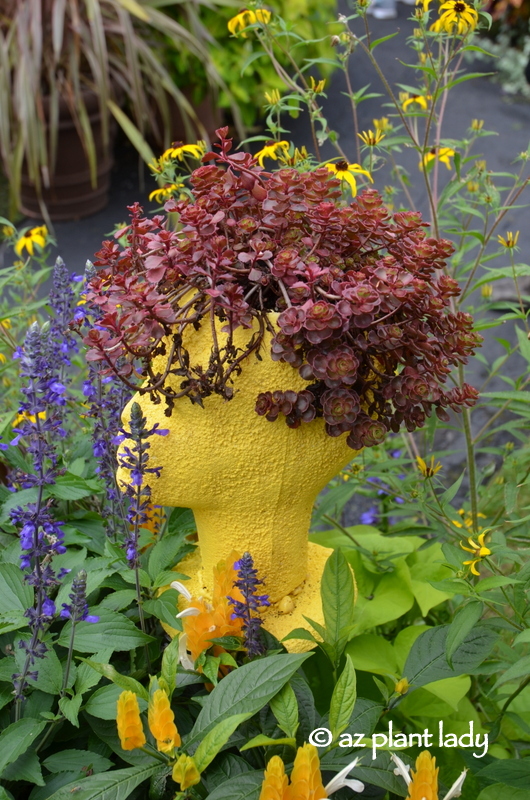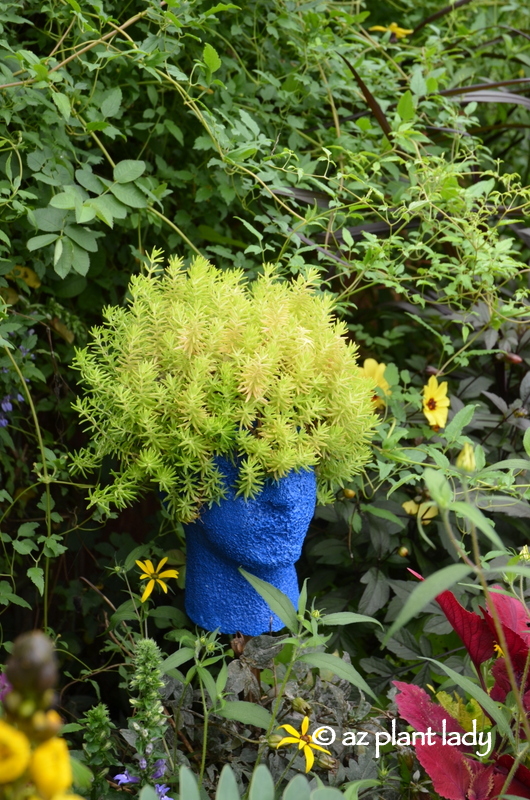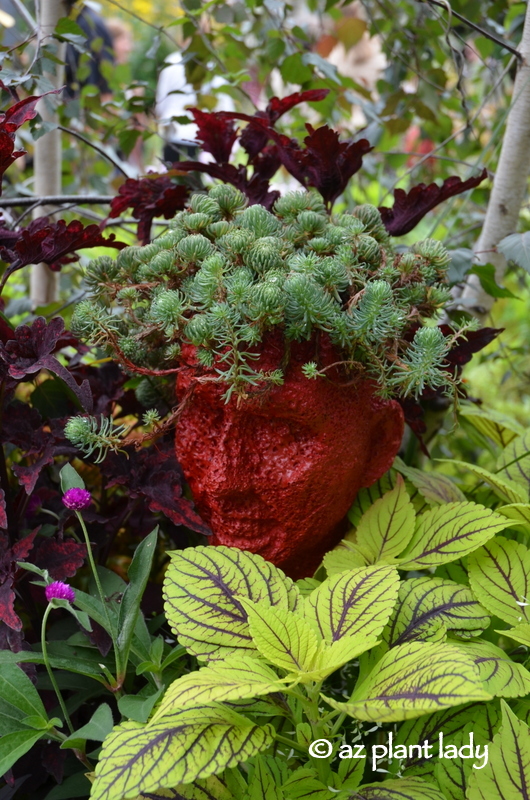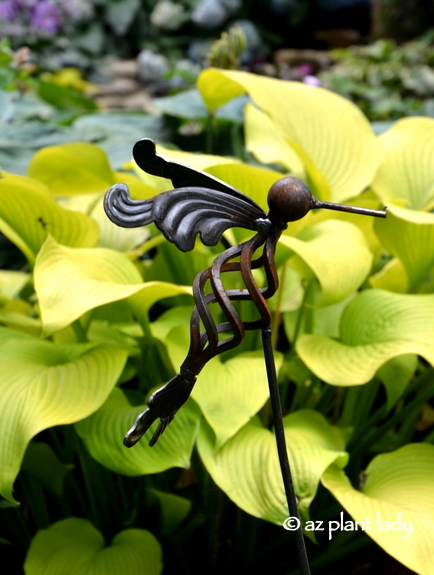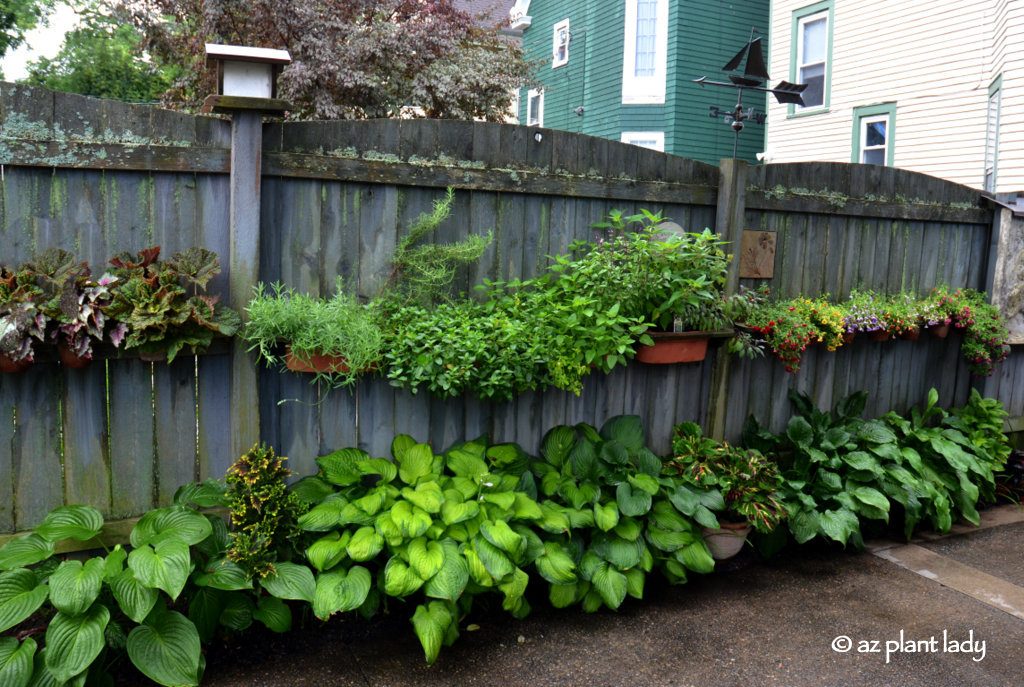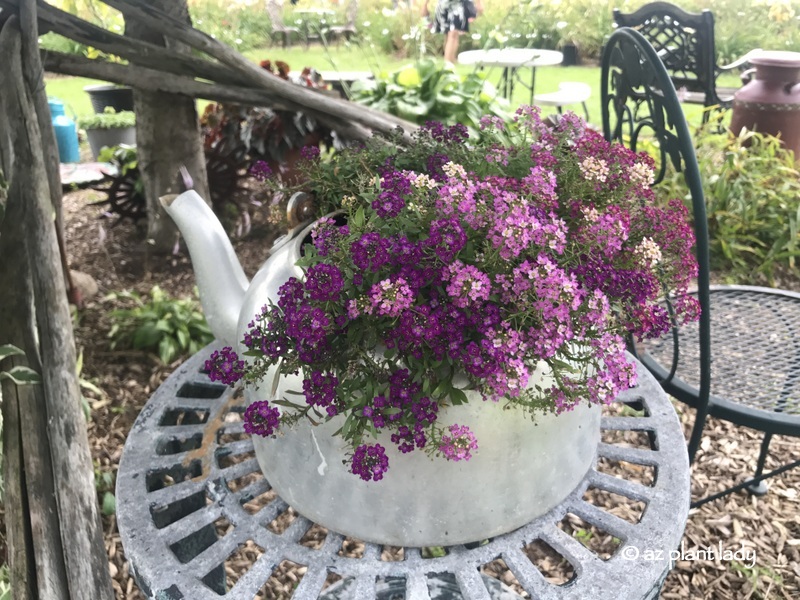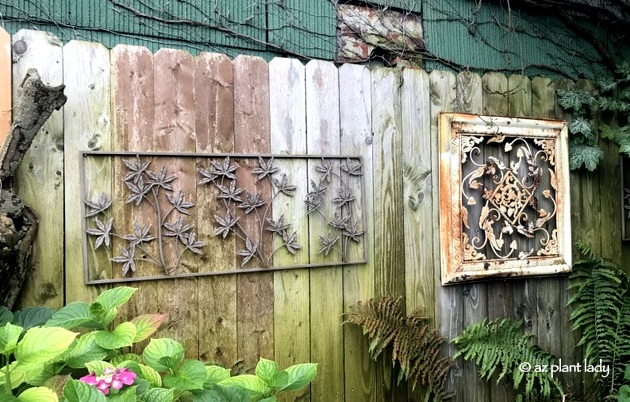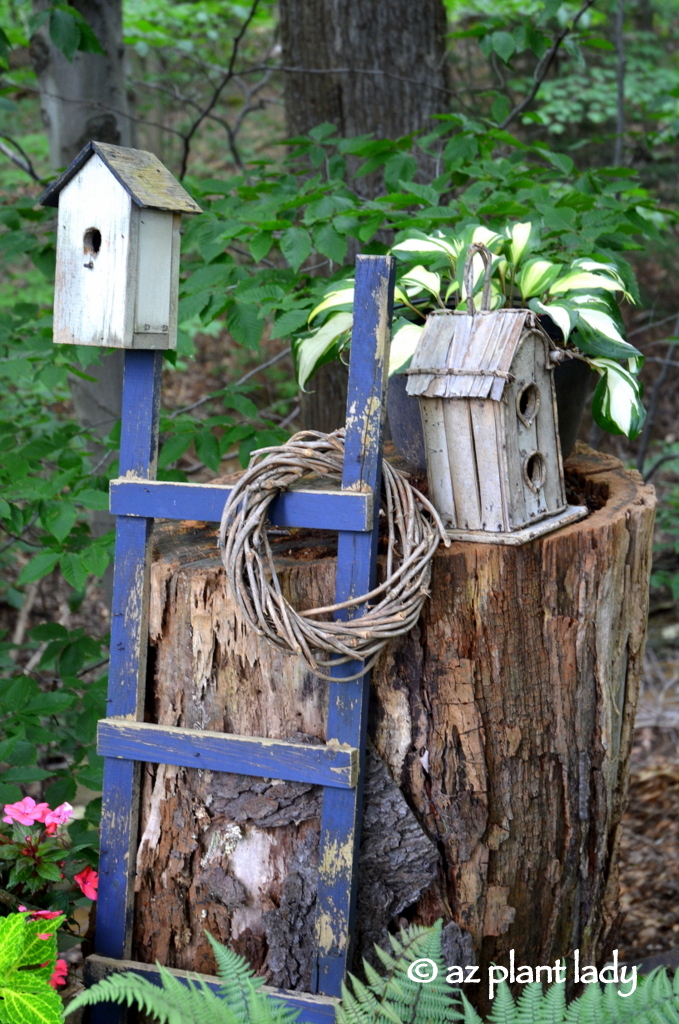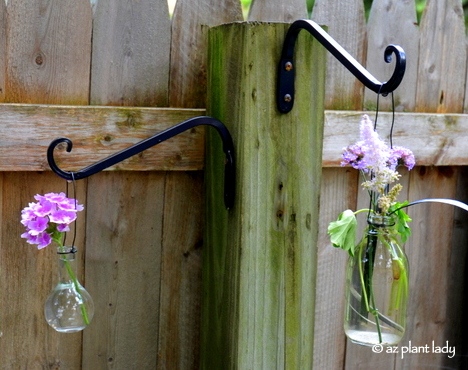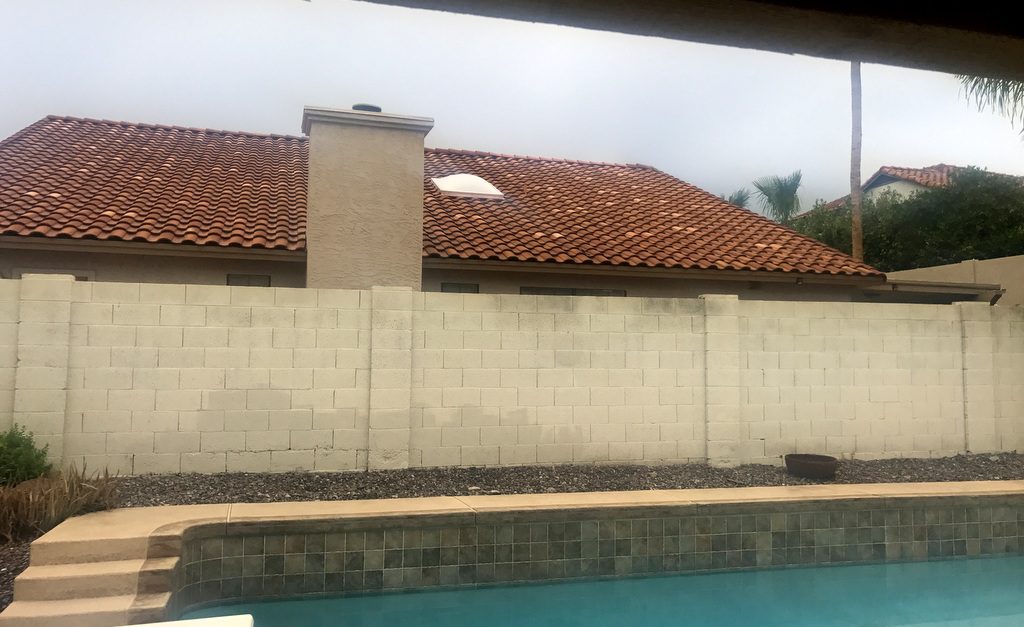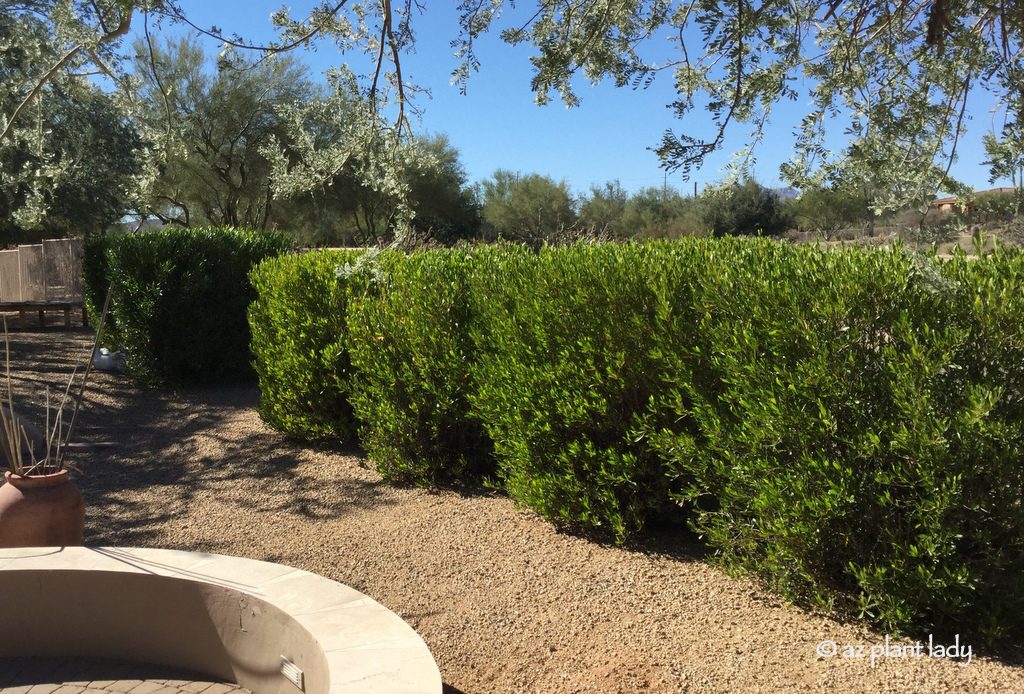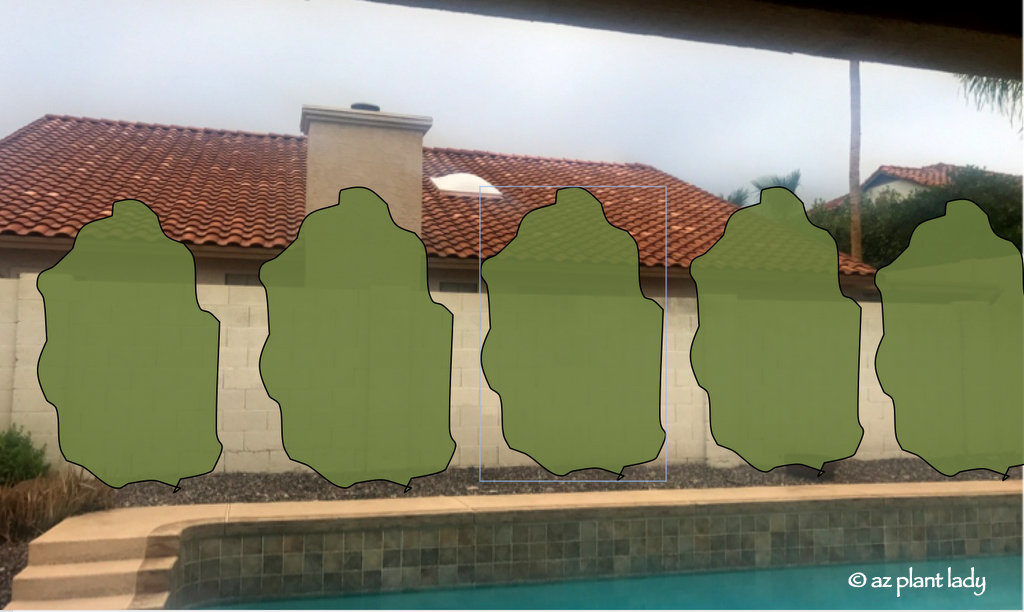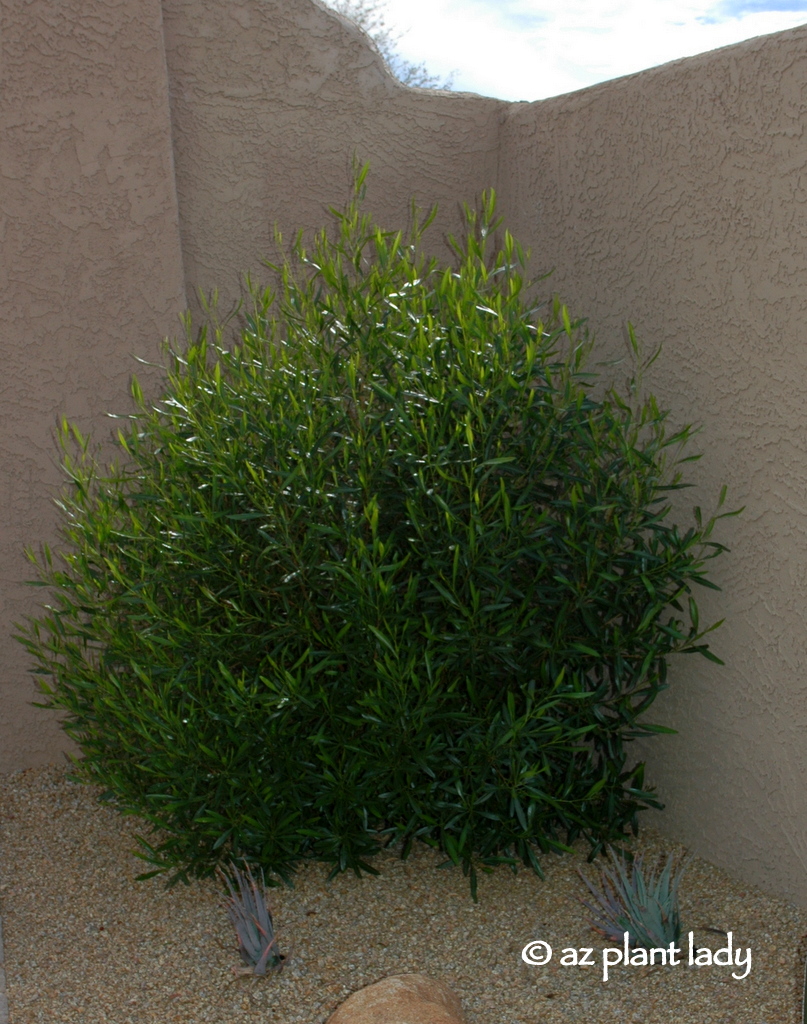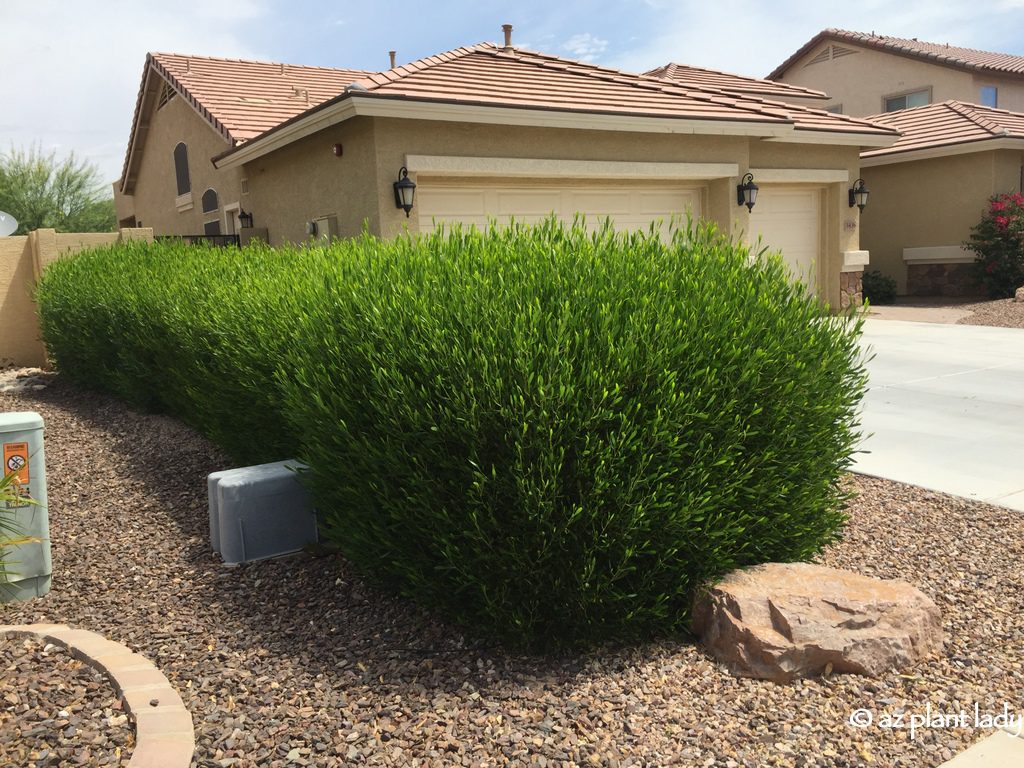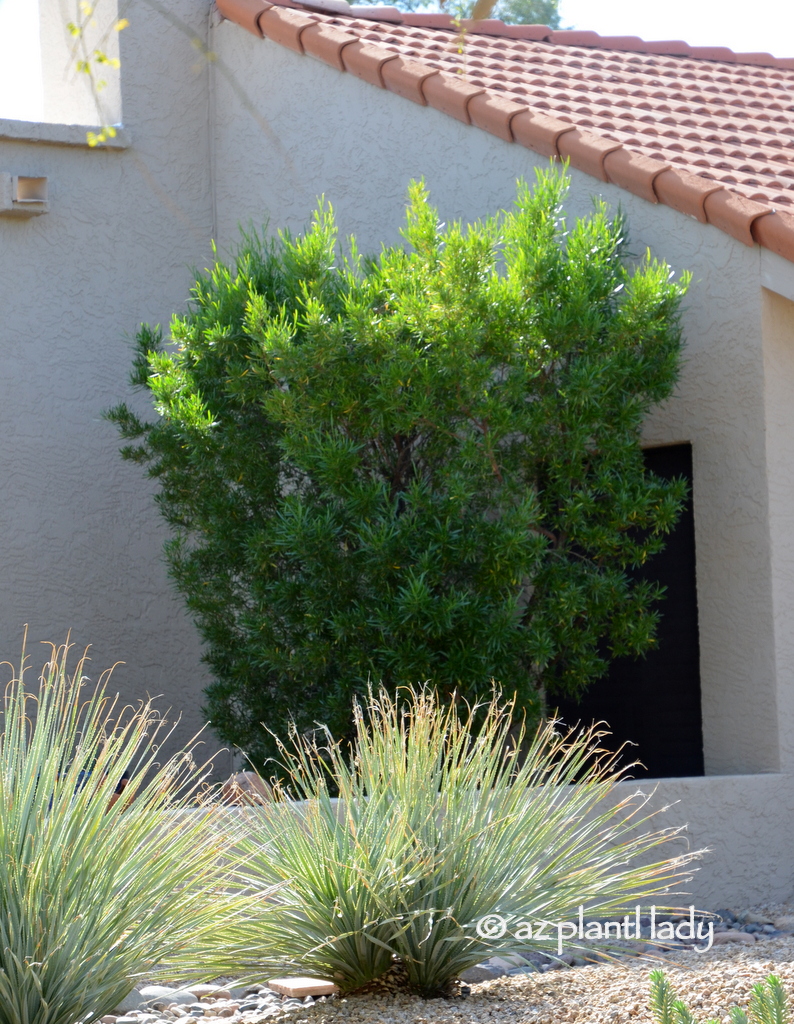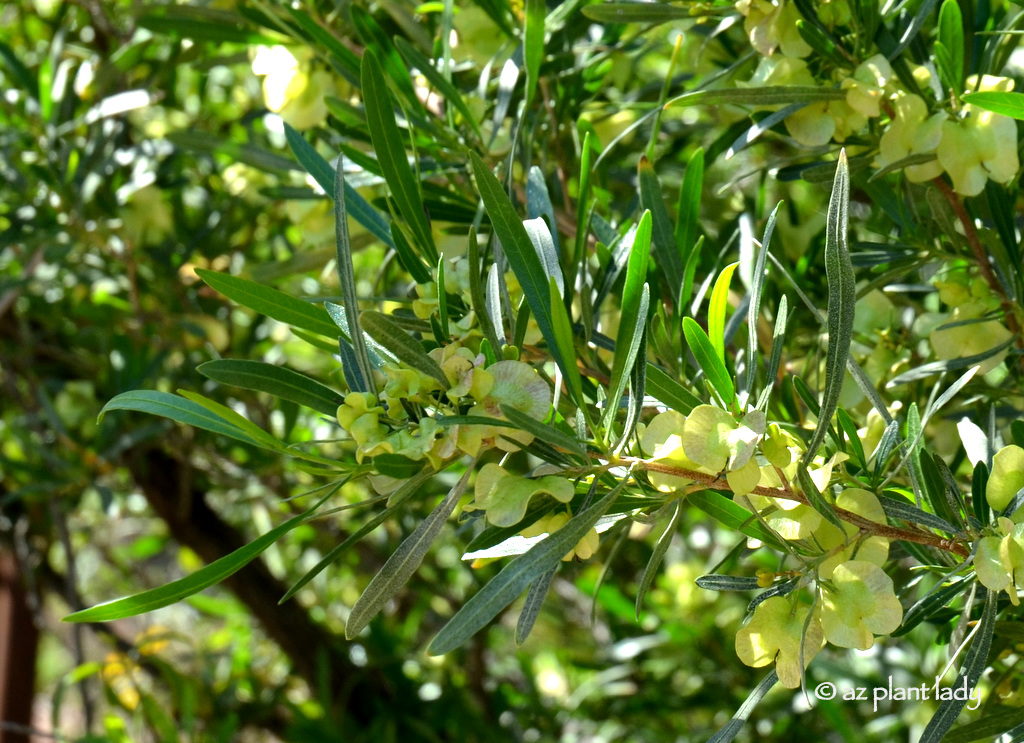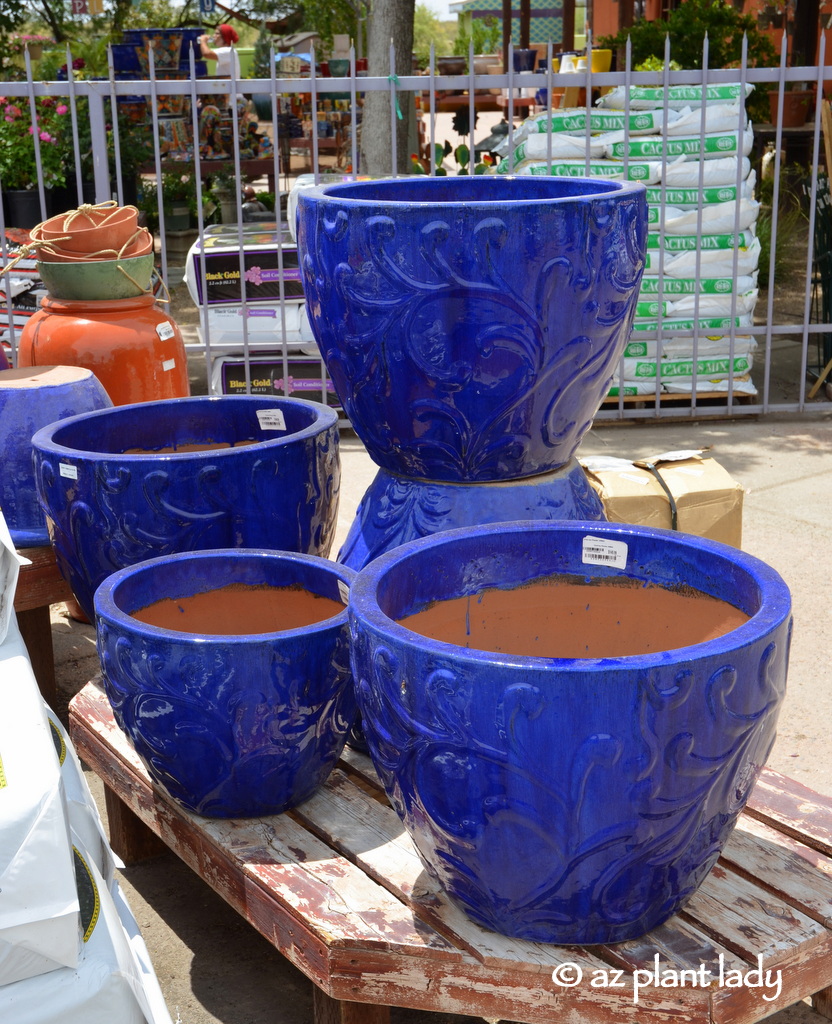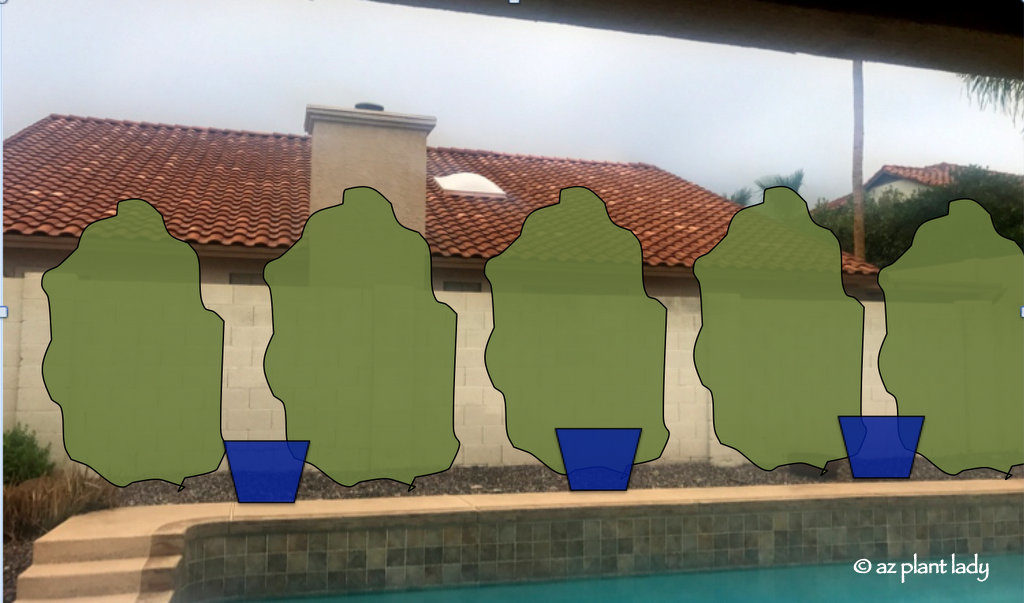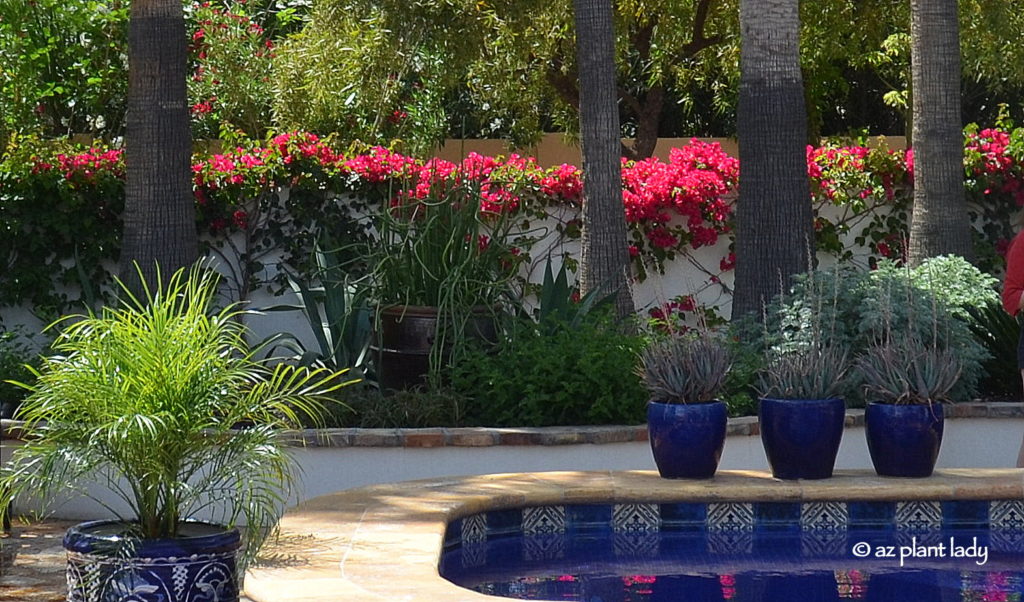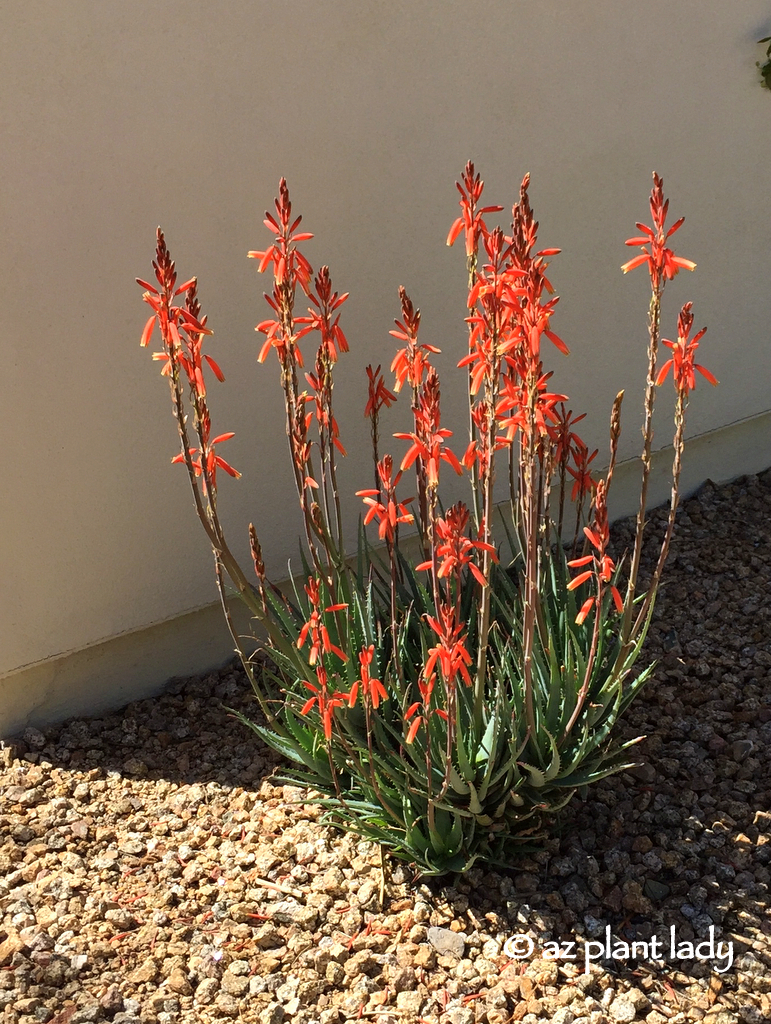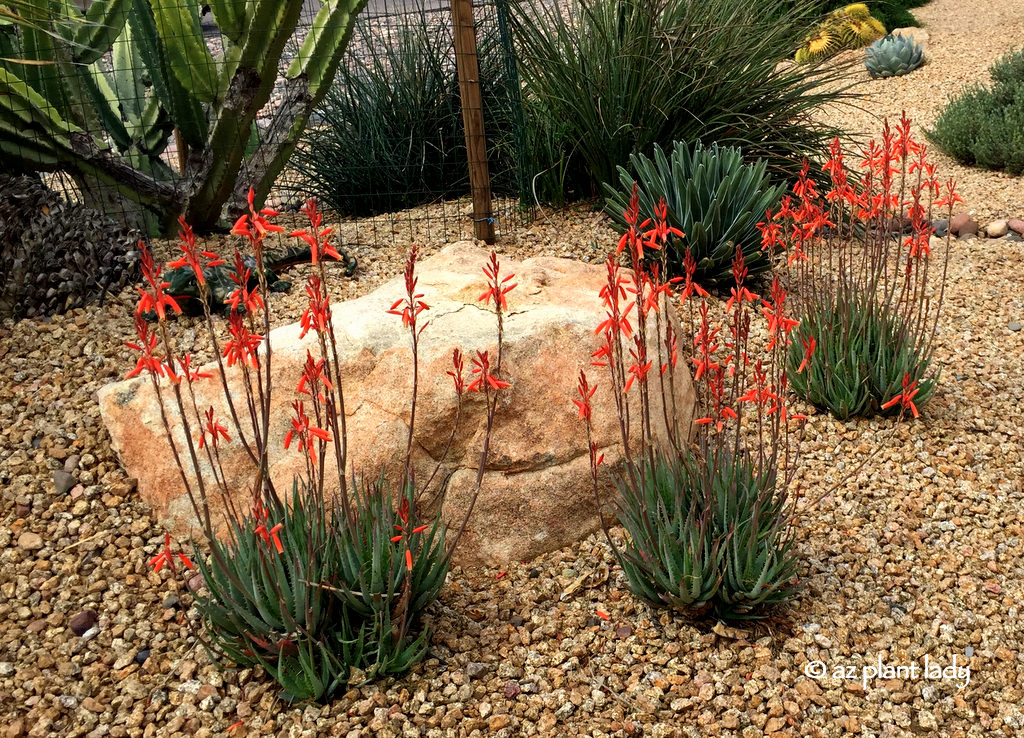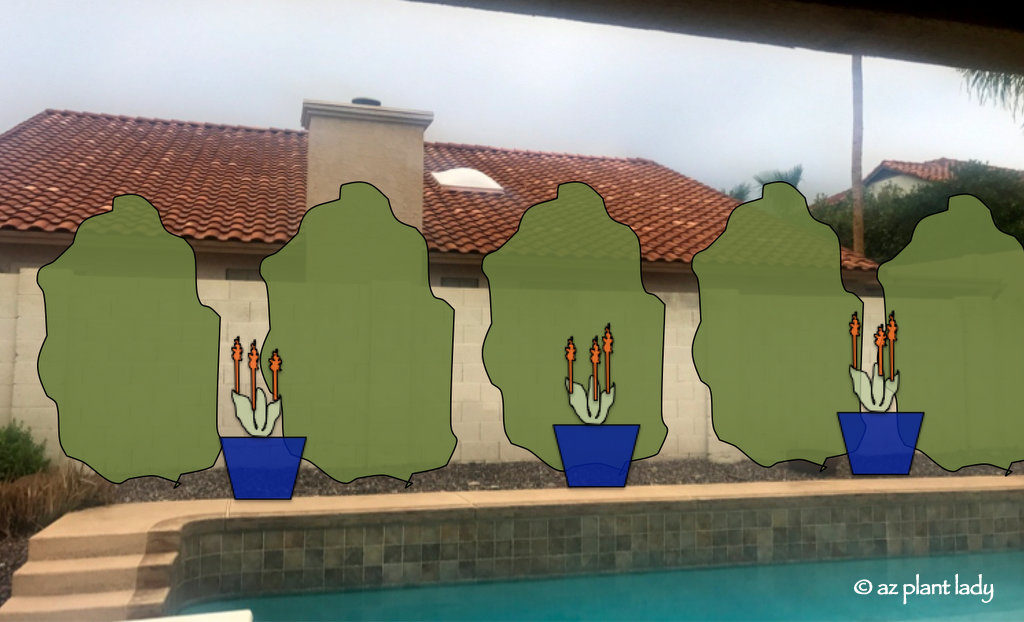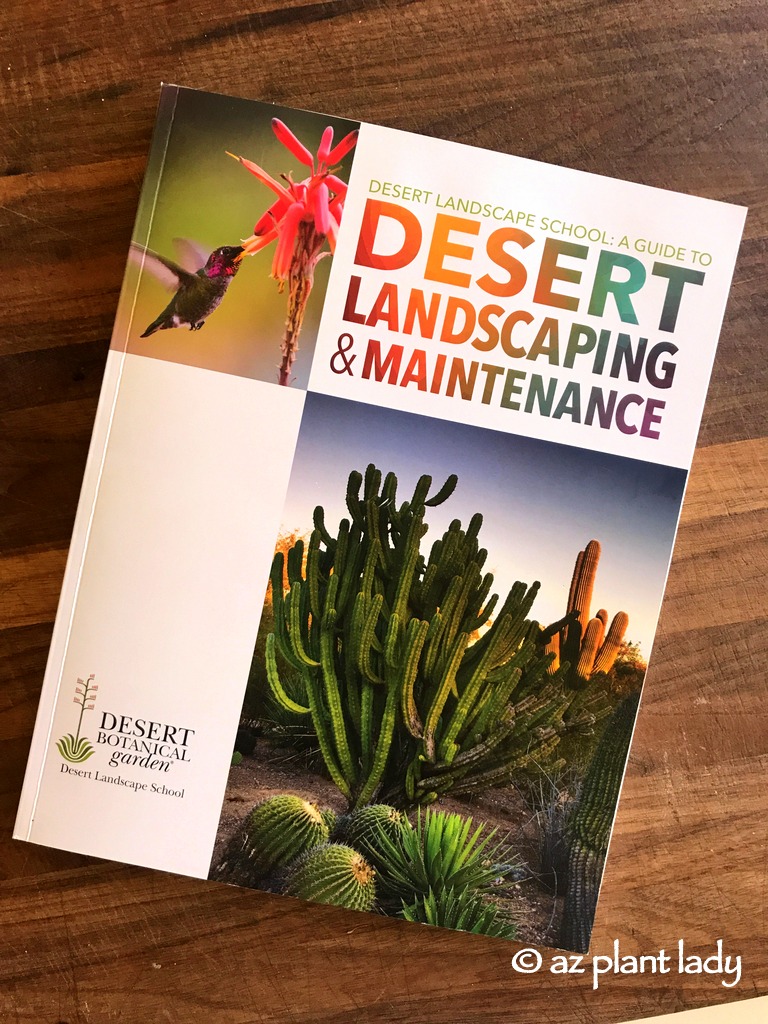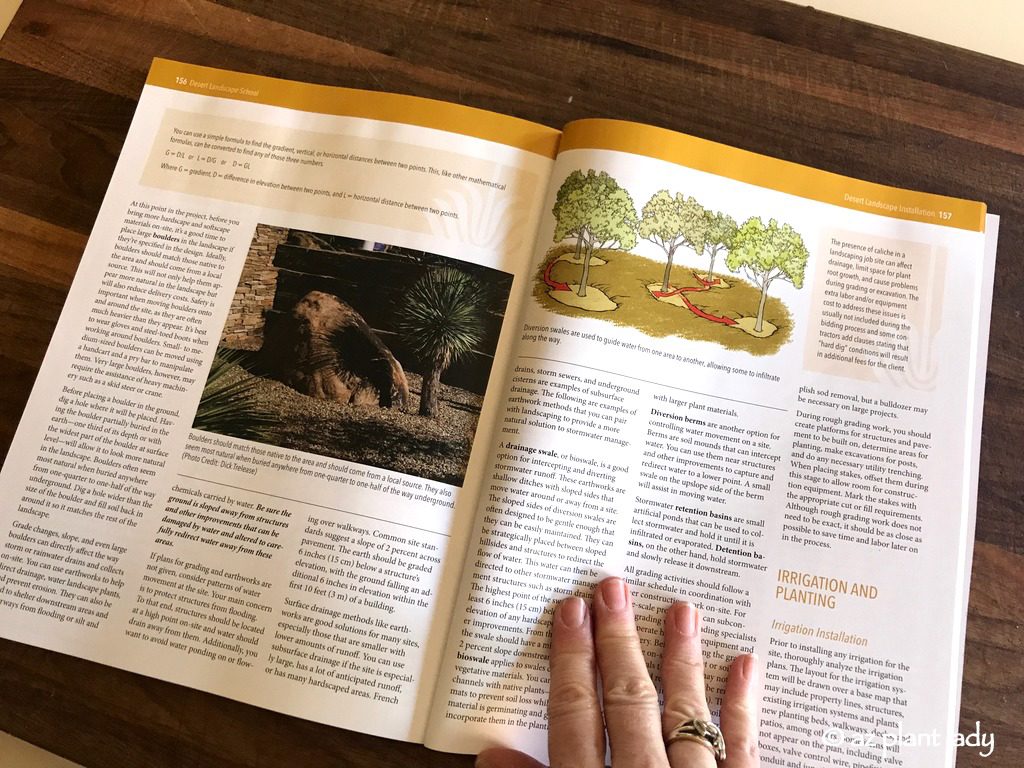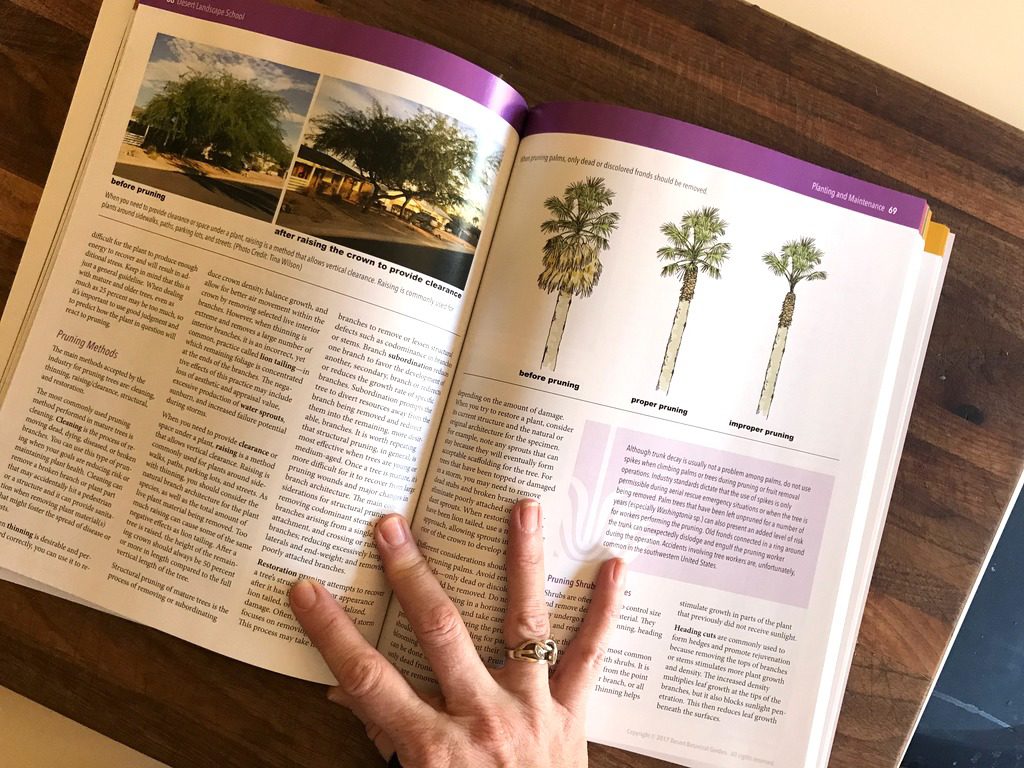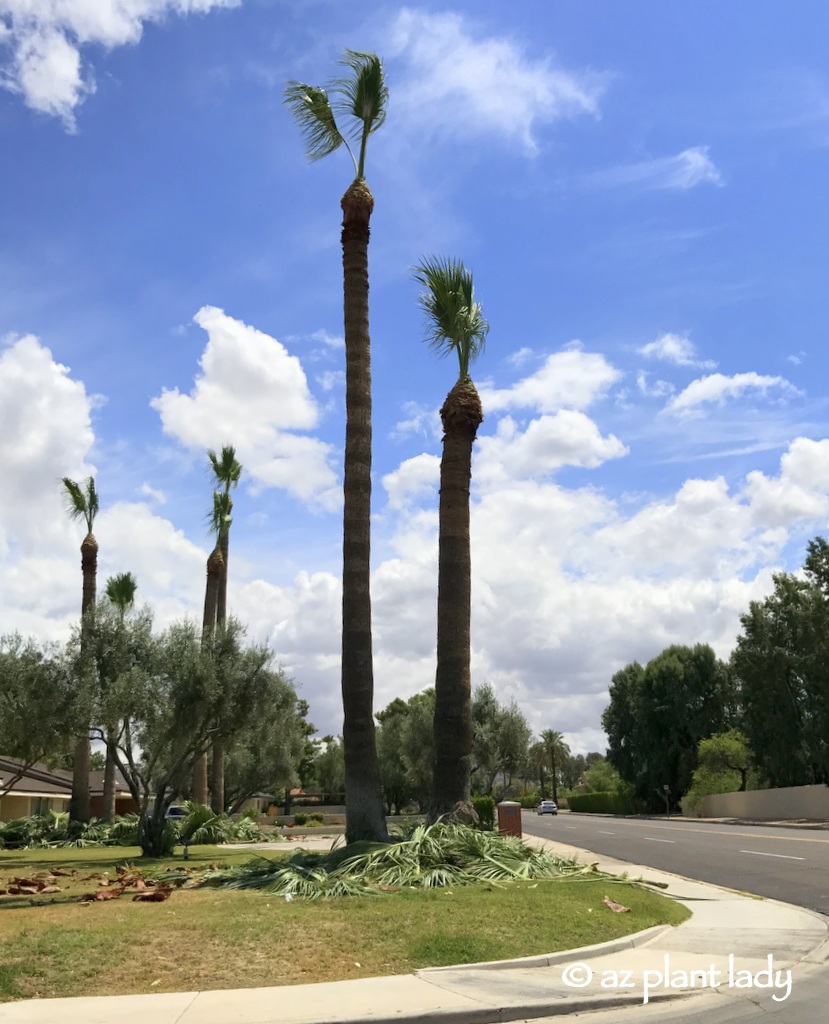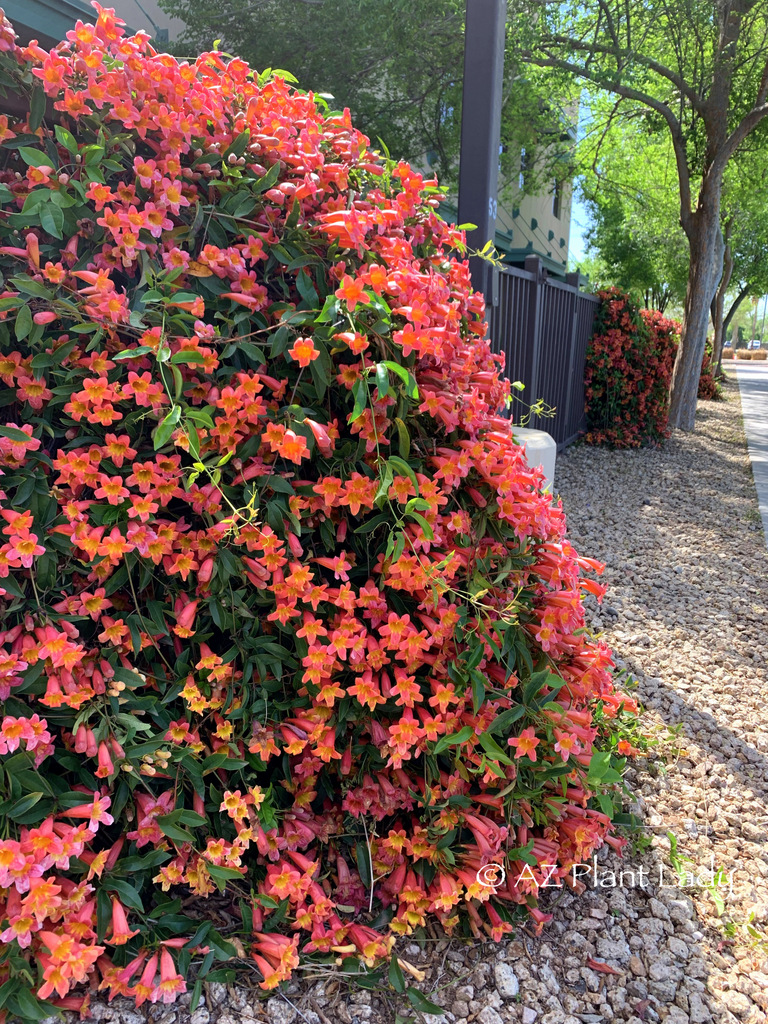
Spring in the desert ‘Tangerine Beauty’ Crossvine (Bignonia capreolata ‘Tangerine Beauty’)
Capturing the Beauty of Spring in the Desert
Spring in the desert is the most beautiful time of year with the majority of plants in the landscape bursting out with flowers. It’s also a very busy time for me with landscape consultations, speaking engagements, work in the garden, and family life. I love to document the happenings in my life by taking photographs with my phone, and I’d like to share a sampling with you. It’s a fun combination that includes colorful plants, spiky pots, snakes, roses and the prom!
Pausing for ‘Tangerine Beauty’ Crossvines
No matter how busy I may be, the sight of a beautiful plant stops me in my tracks. It doesn’t matter how rushed I may be; I will always stop and take a photo. That’s what happened when I spotted this row of ‘Tangerine Beauty’ crossvines on our way into church. Even though we were running a few minutes late (as usual) I had to pause to admire the beauty of the lovely blooms and take a photo.
‘Tangerine Beauty’ does very well in the low desert garden. It has lush green foliage and orange/pink flowers that hummingbirds love. It needs a trellis or other support to climb up on and does well in full sun to filtered sun, but avoid planting along a west-facing wall as it may struggle in reflected sun.
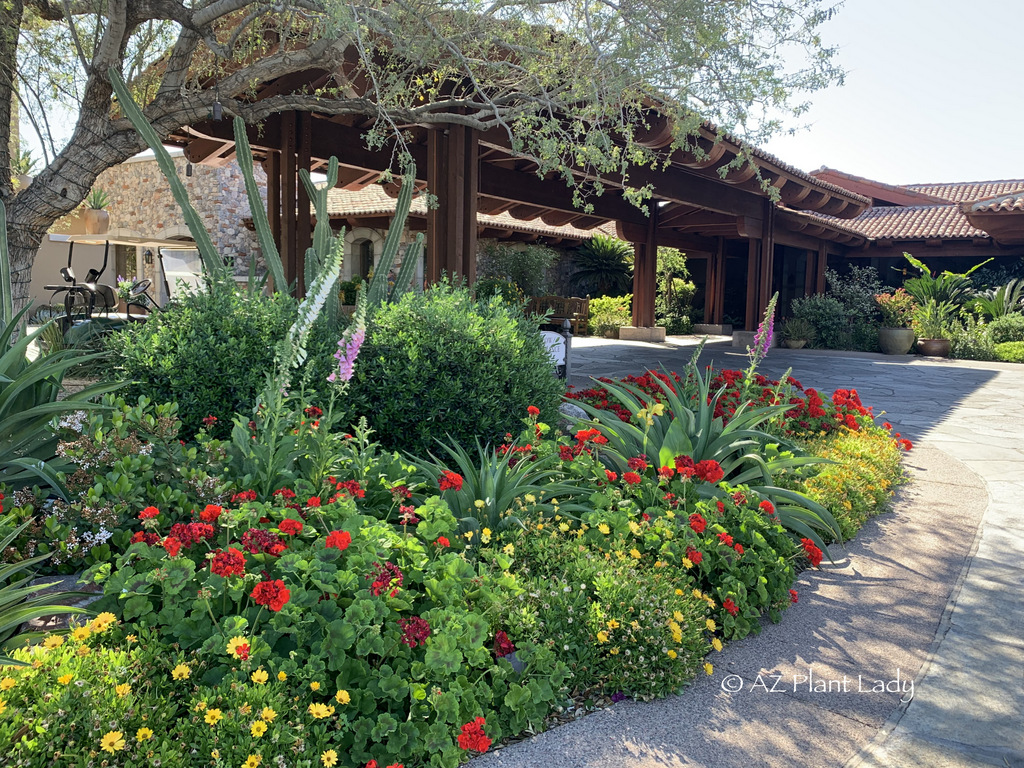
Spring in the Desert Speaking Engagements and Garden Inspirations
As a speaker on various gardening topics, my journey often takes me to the Desert Botanical Garden, public libraries, and also to garden groups. During one of my presentations at the Paradise Valley Country Club, I was greeted by this beautiful bed filled geraniums, foxglove, and yellow daisies. The spiky shape of agave adds welcome texture contrast in this area.

Nearby, an impressive collection of spiky succulents graces decorative pots. Agave, with their striking spiky shapes, makes excellent container plants. Placed against a wall, these succulents thrive in full sun and embrace reflected heat with grace.
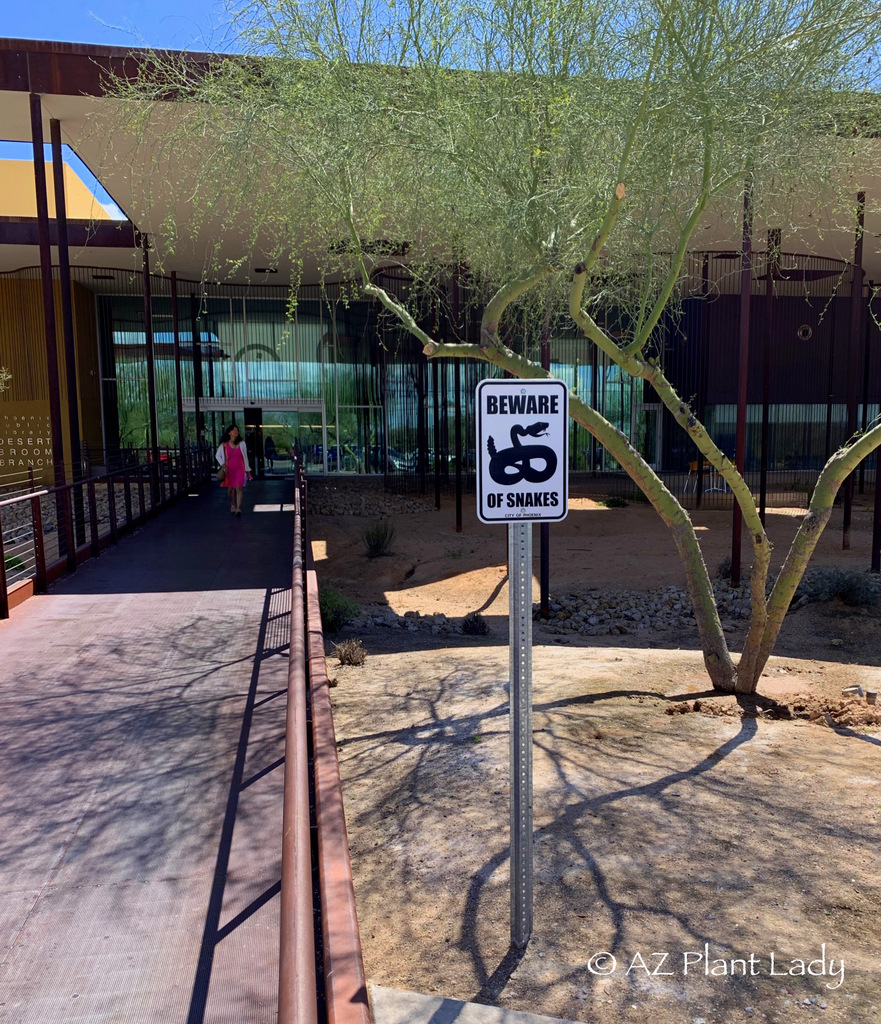
The Quirky Side of Presentations
Speaking engagements can sometimes bring unexpected surprises. Here is a very different entry to another presentation I was to give at the Cave Creek Branch of the Phoenix Public Library. Two identical caution signs flank the raised metal bridge, which makes you look carefully before approaching. A humorous touch, albeit one that might discourage young readers, added a dash of quirkiness to the library entrance.
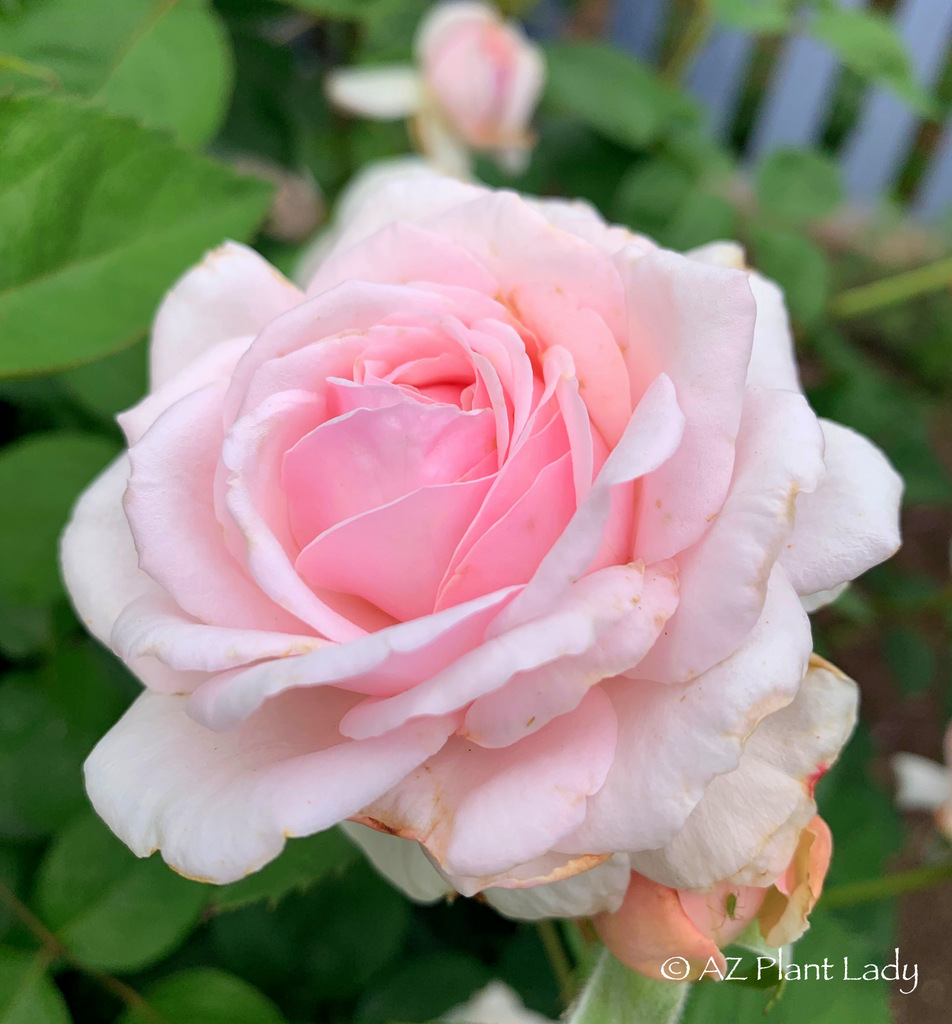
‘Olivia Rose’
Embracing the Rose Garden
Back home, the rose garden is in full bloom with my favorite ‘Olivia Rose’ completely covered in fragrant, delicate pink color. She flowers more than every other rose in the garden and for the longest, ensuring her favored status.
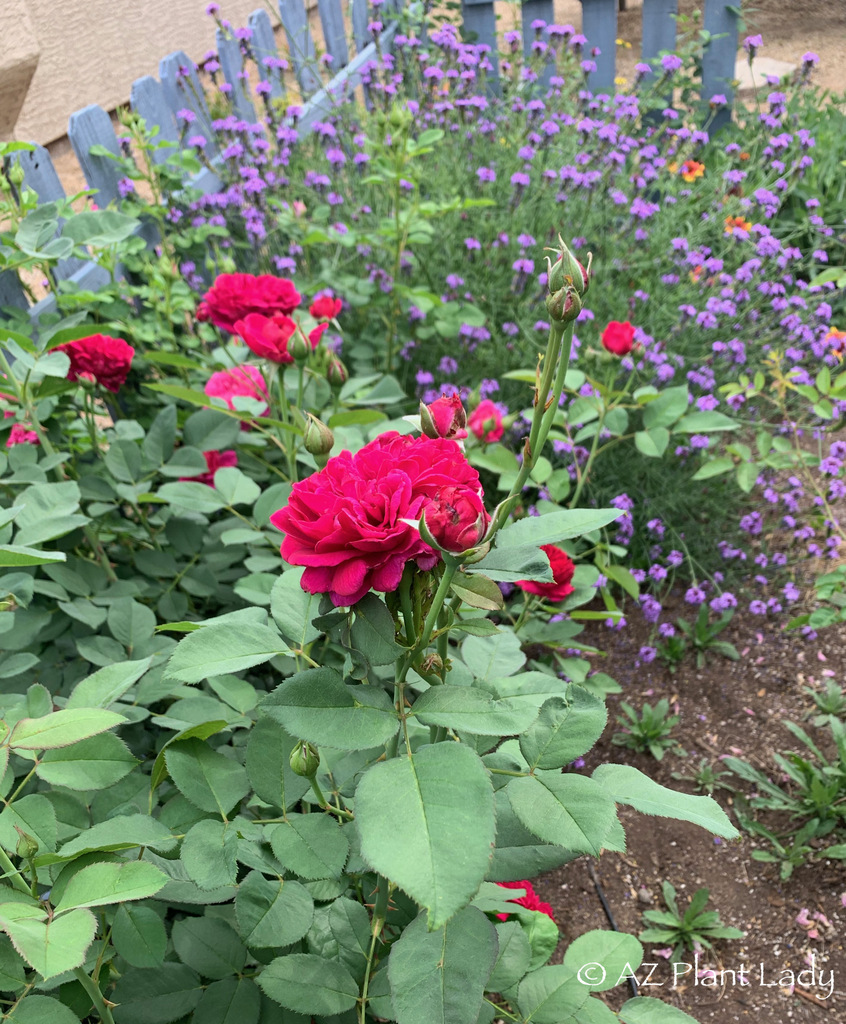
‘Darcey Bussell’
The best performing red rose in the garden is ‘Darcey Bussell,’ and she never disappoints as I view her vibrant blooms from my kitchen window.
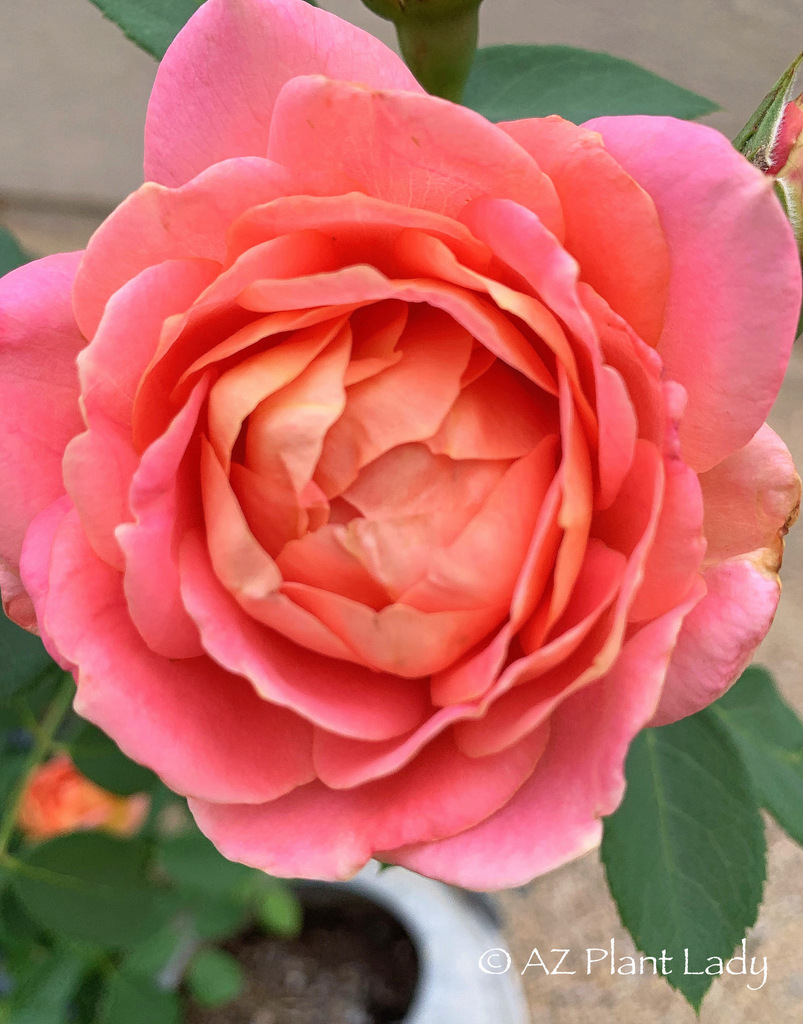
‘Lady of Shalott’
This rose is a relative newcomer to my rose garden. ‘Lady of Shalott’ was planted in the winter of 2018 and didn’t produce many blooms in her first year, which is typical of most new roses. However, this year, she is covered with roses in delicate shades of pink and peach.
A Touch of Prom Night
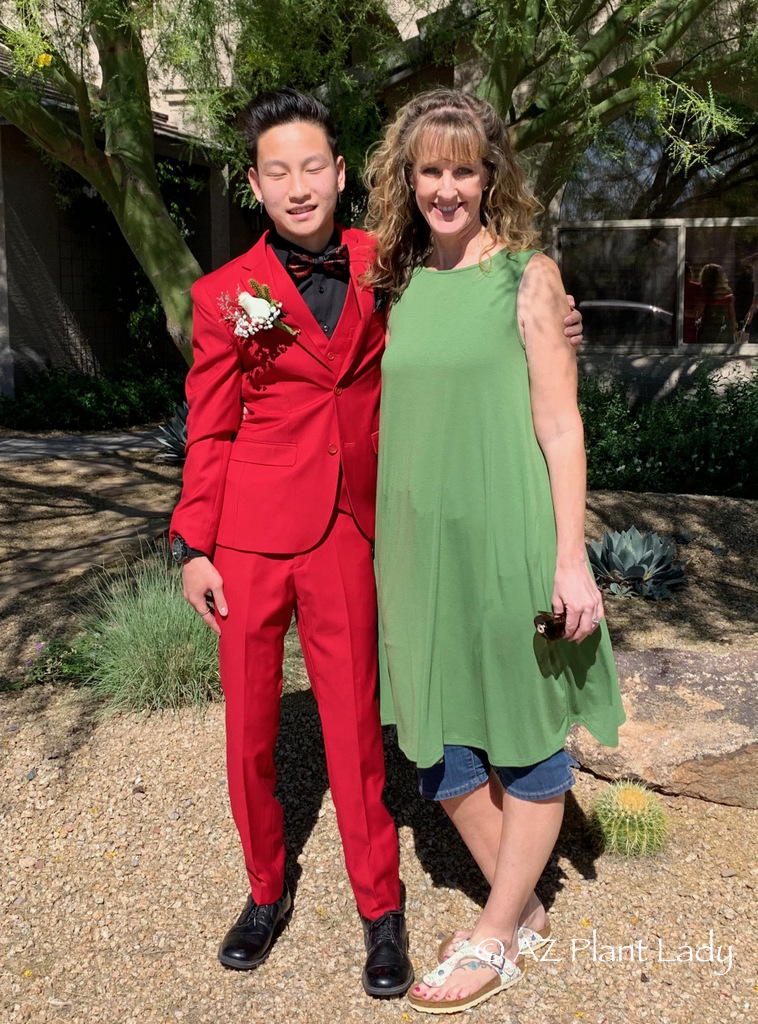
On the home front, spring means that it’s time for the prom. I can hardly believe that my son is old enough – it seemed like it was just yesterday when I came home with a darling little two-year-old boy from China.

Kai’s favorite color is red, can you tell? It takes confidence to wear a bright color like this, and he does it so well. He is the youngest of four sisters, so this was my first time helping a boy get ready for a school dance. Honestly, it is a lot simpler – all he needed was help with his tie and his boutonniere.
I revel in the bustling energy of spring and cherish the vibrant moments it brings. How about you?


